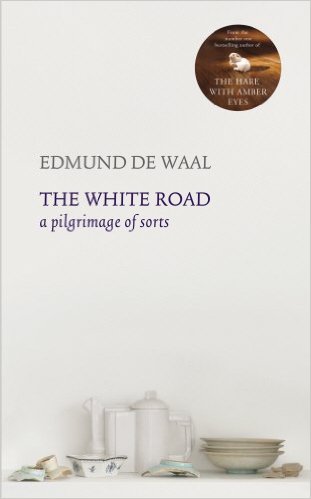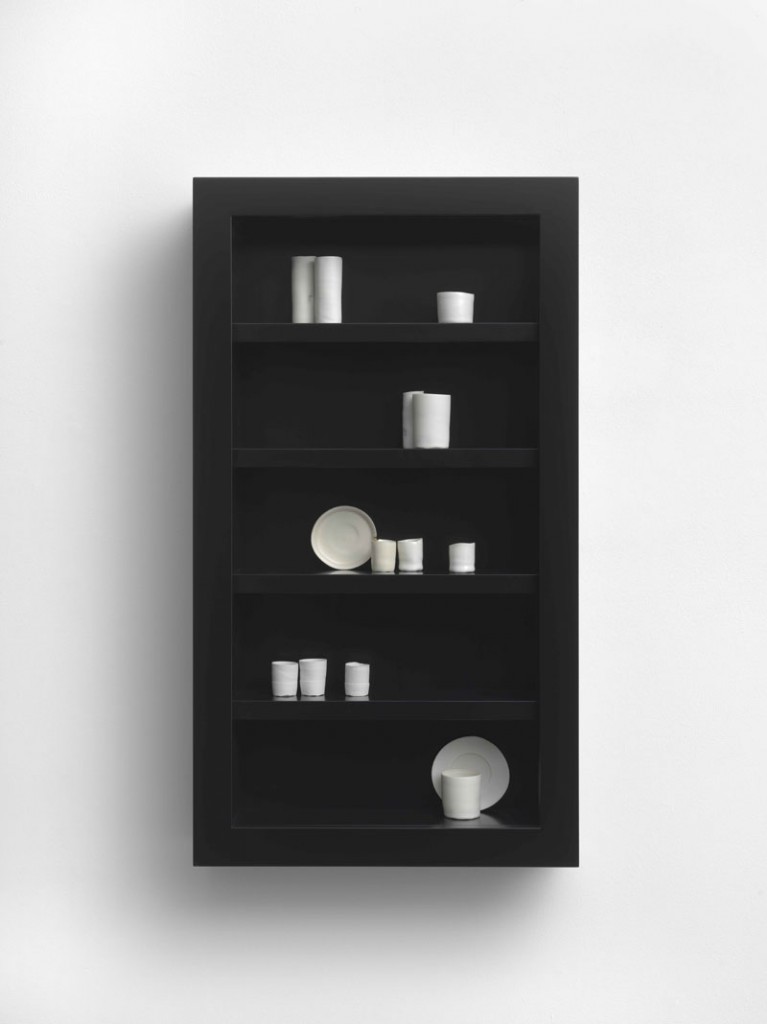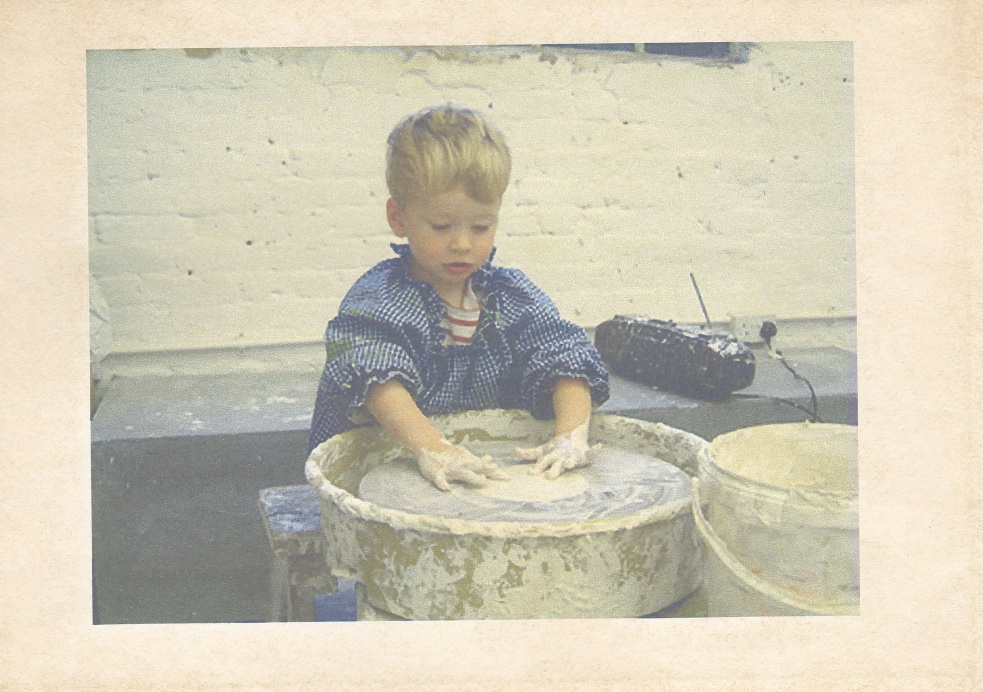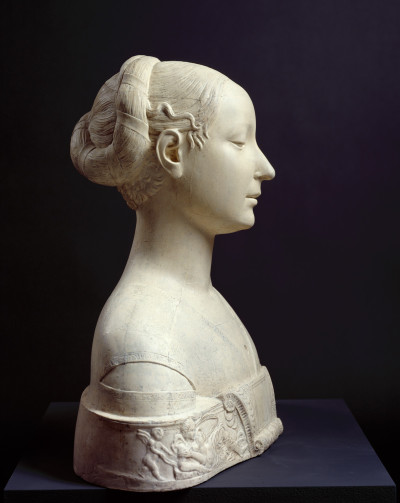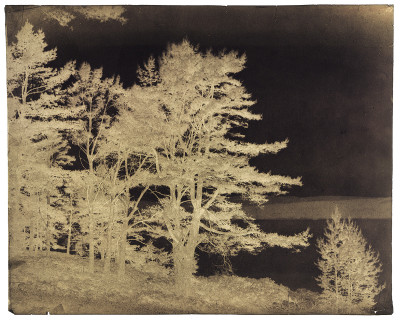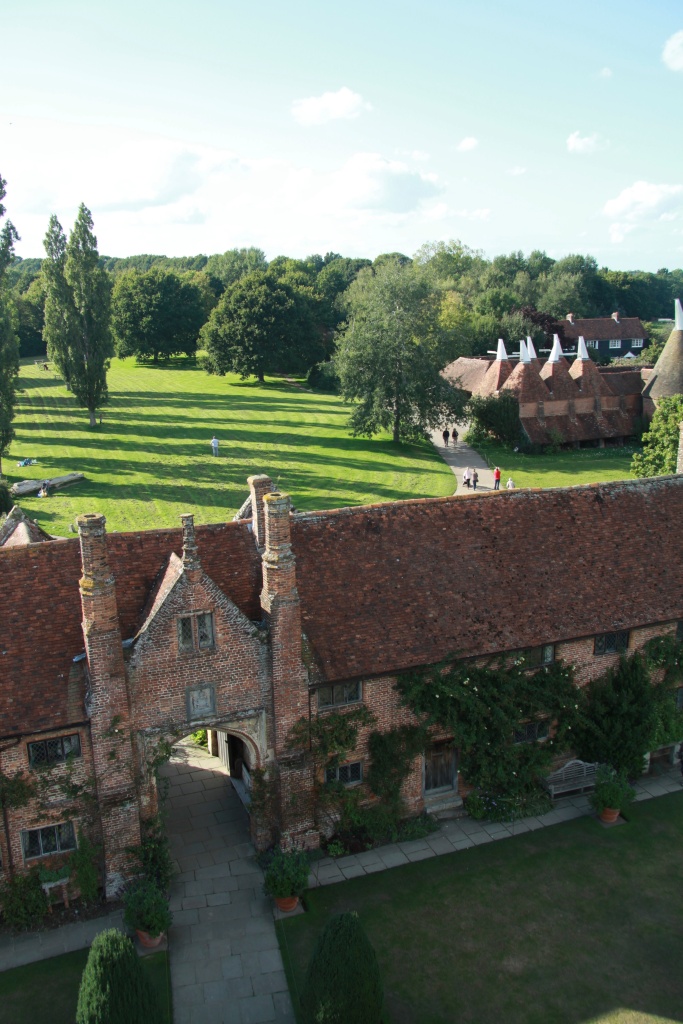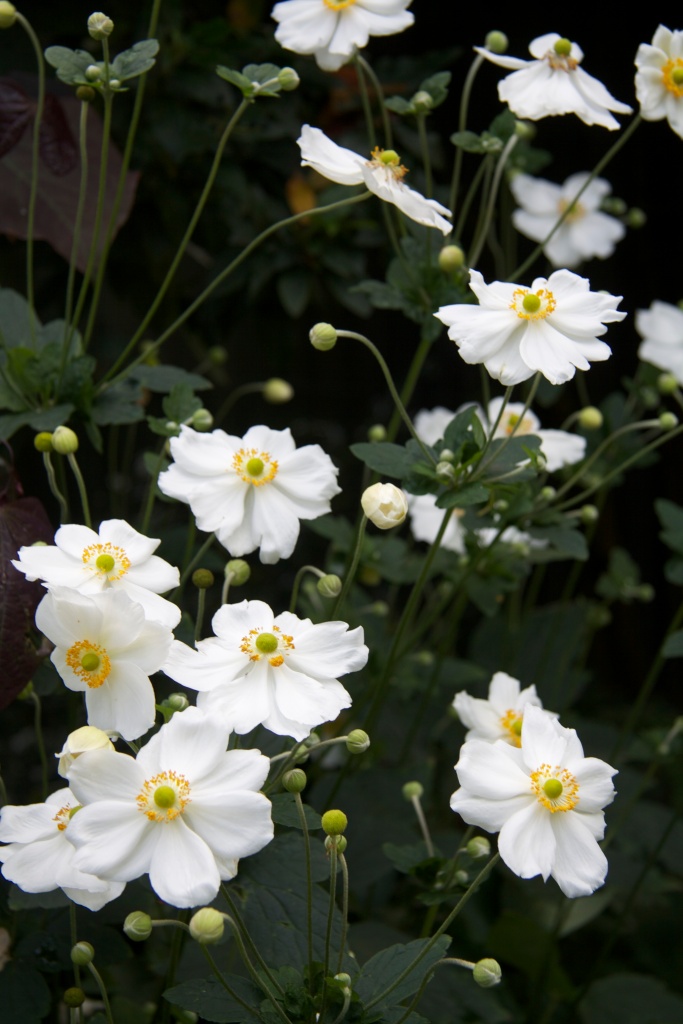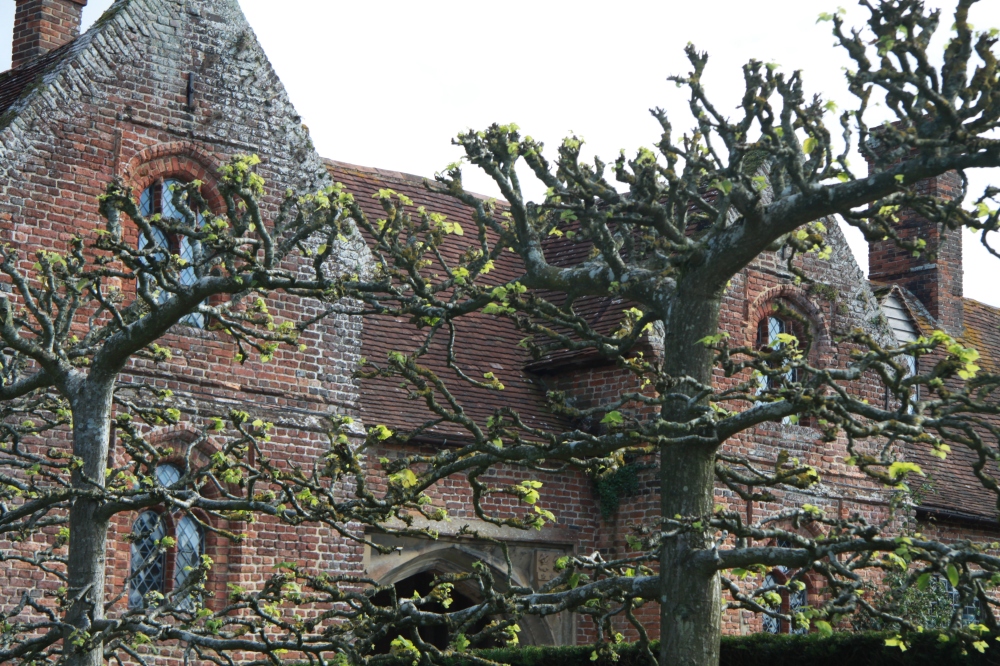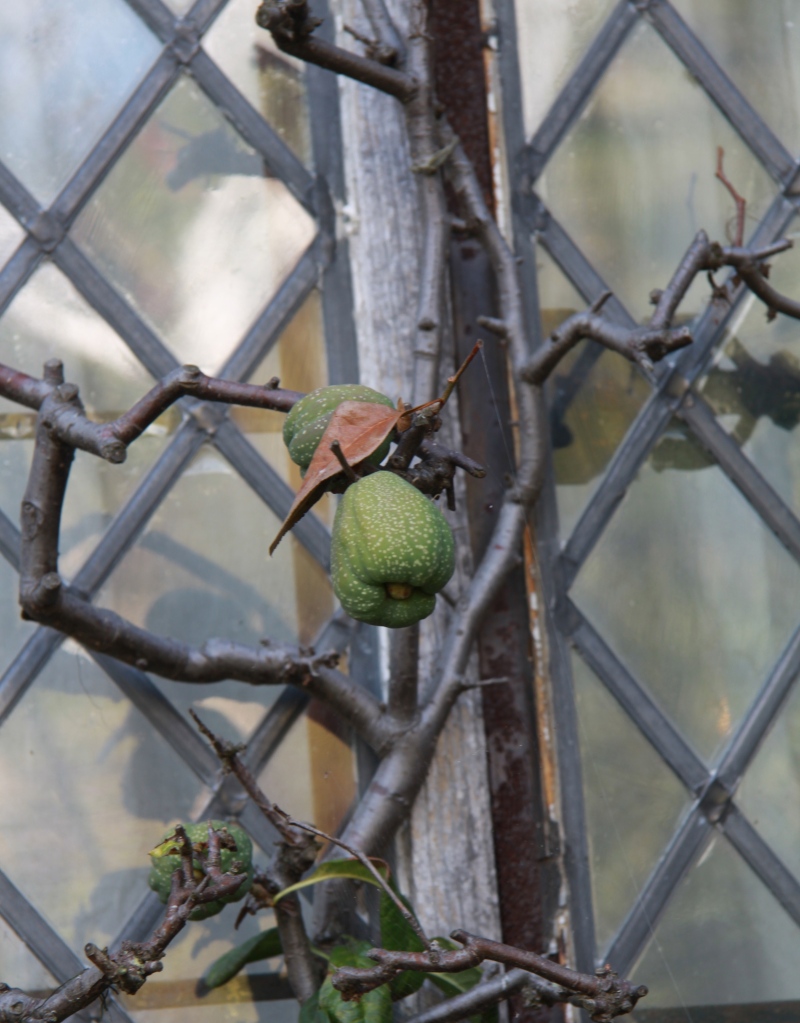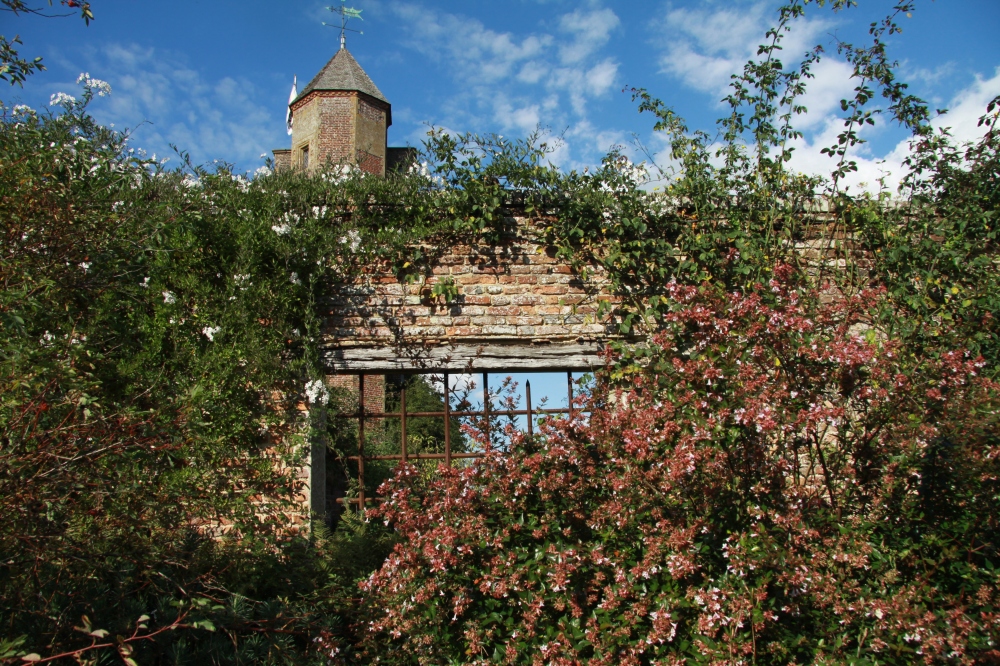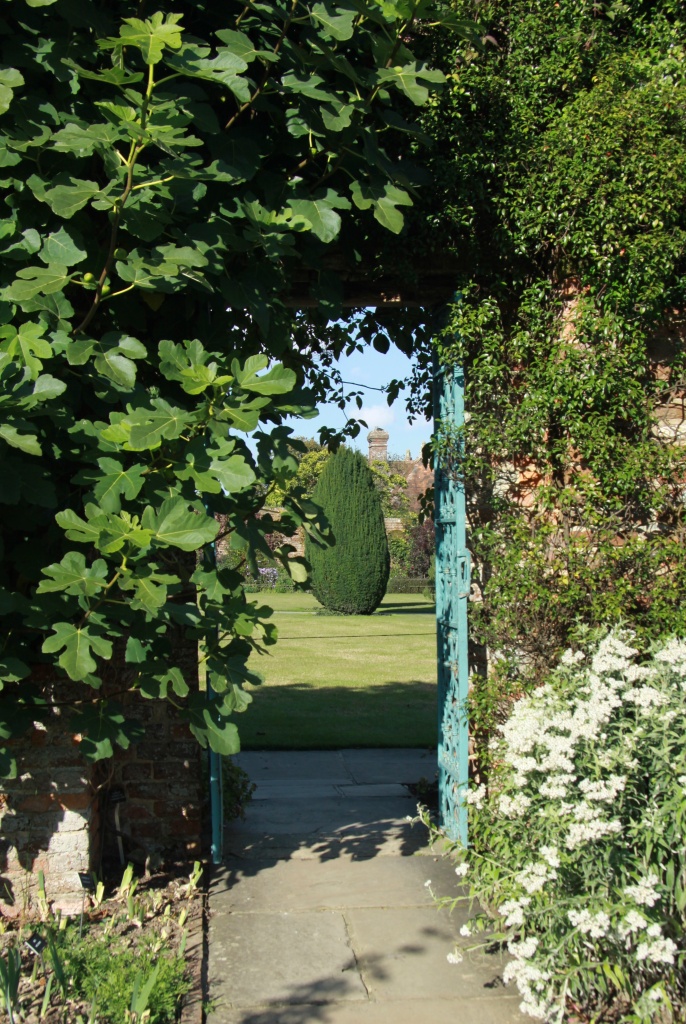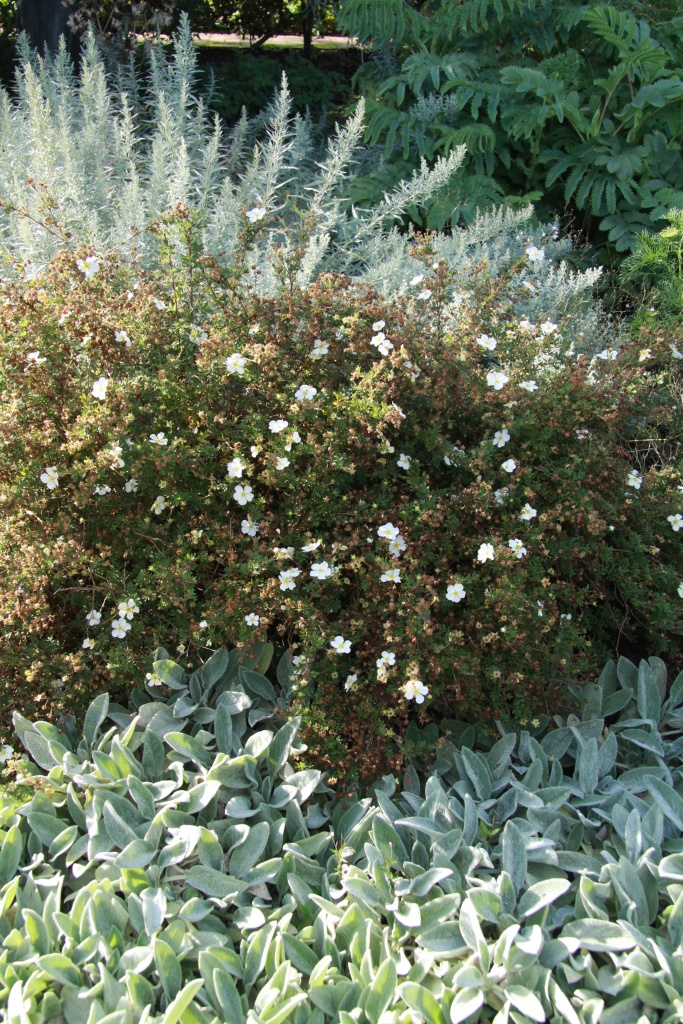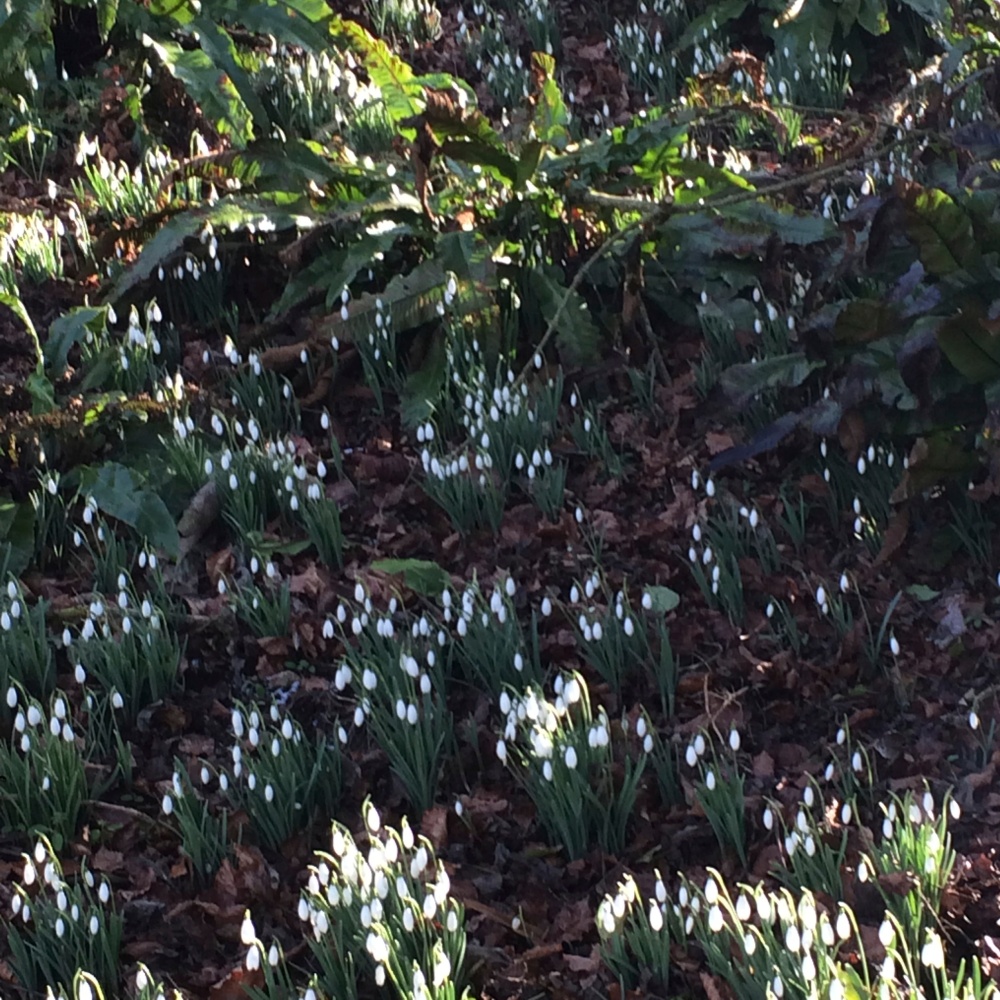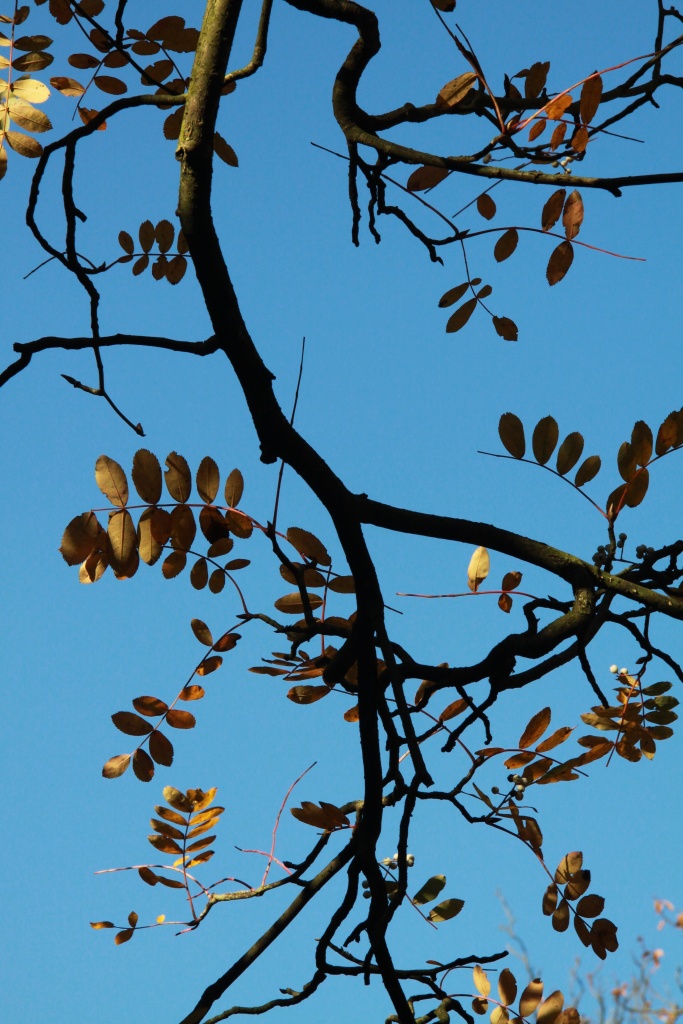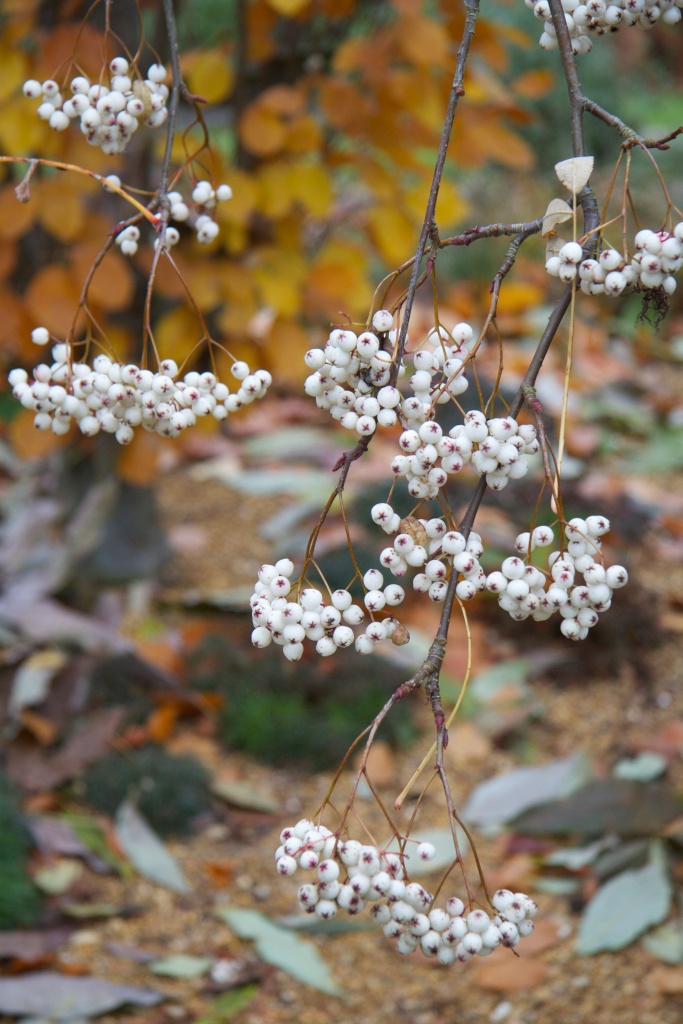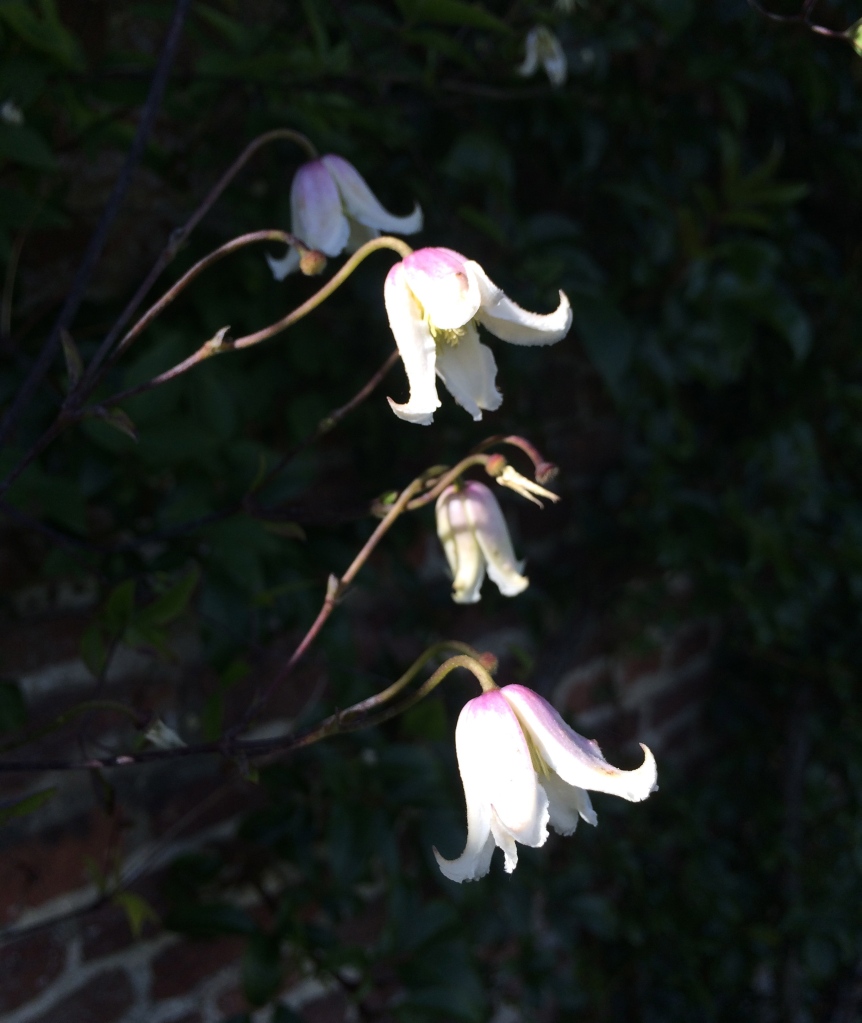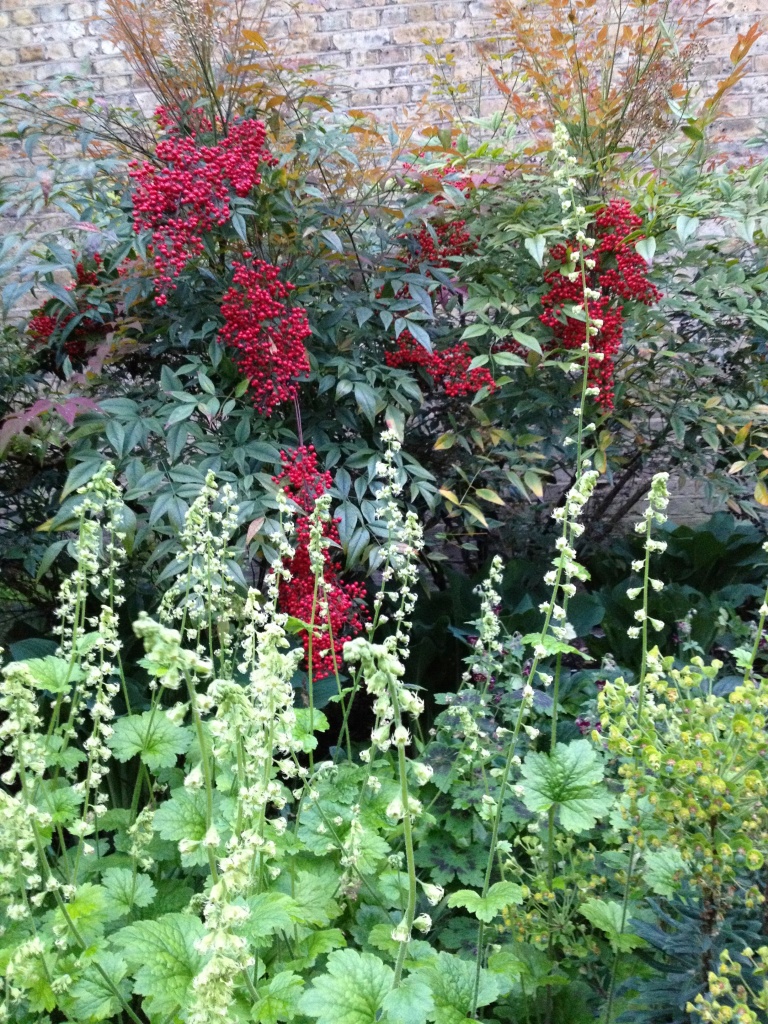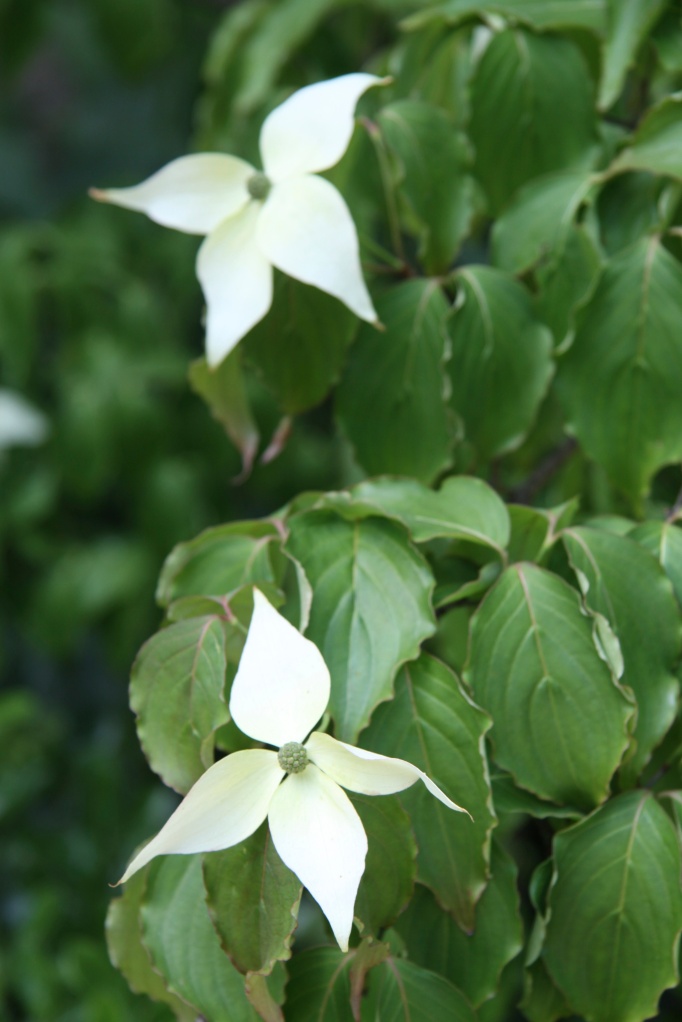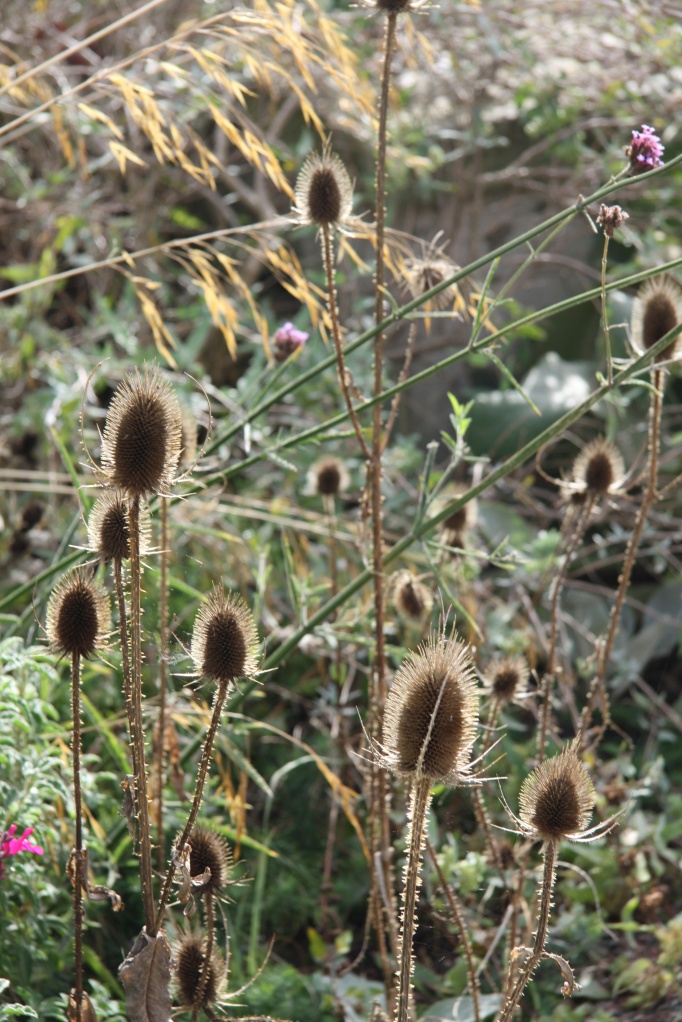ON LOOKING HARDER, HARD WORK AND THE COLOUR WHITE
Edmund de Waal – portrait ©Ben McKee
Edmund de Waal is a potter whose quietly radiant work pushes the boundaries of what you think a pot can be. After more than thirty years of friendship with Edmund, I should not be surprised that his writing continues to be intoxicatingly erudite and singingly story-telling. I have just finished the newly published ‘THE WHITE ROAD a pilgrimage of sorts’ and my mind is buzzing.
‘THE WHITE ROAD’ is the story of Edmund’s journey to find out as much as he can about the history of porcelain – the medium in which he makes his pots. He travels from his studio in Tulse Hill, South London to China, Germany and Cornwall “I need to get to these places, need to see how porcelain looks under different skies, how white changes with the weather. Other things in the world are white but, for me, porcelain comes first.”
And you are there inside his head and looking through his eyes as he unravels the past and weighs up the present. His description of working with porcelain, the need to get it “thinner and thinner until it is as thin as gold leaf and lifts into the air” – thin enough to let the sun shine through, hard enough to ring like a bell – is a crucial hook. He describes the French porcelain clay he has on his bench – “the colour is of full-fat milk, with a bloom of green mould” – and importantly he explains how when he throws a pot he is “trying to still a small part of the world, make an inside space.”
A mind of winter (2015), Edmund de Waal © Edmund de Waal. Photo: Mike Bruce
Edmund and I met on a student committee for the extraordinary Kettle’s Yard in Cambridge – the private house and collection of art, furniture and found objects belonging originally to Jim and Helen Ede which has evolved into an important contemporary art gallery. Crucially at the heart of Kettle’s Yard there is still a home, with its modest, white loose-covered furniture and small jugs of flowers from the garden, alongside paintings by Ben and Winifred Nicholson and inscriptions by David Jones. The great perk of our student role was the requirement to be in the house as invigilator on a mid-week afternoon – escaping the bustle of university life and giving us time to think amongst the cast shadows and inspirational landscape of this calm interior:
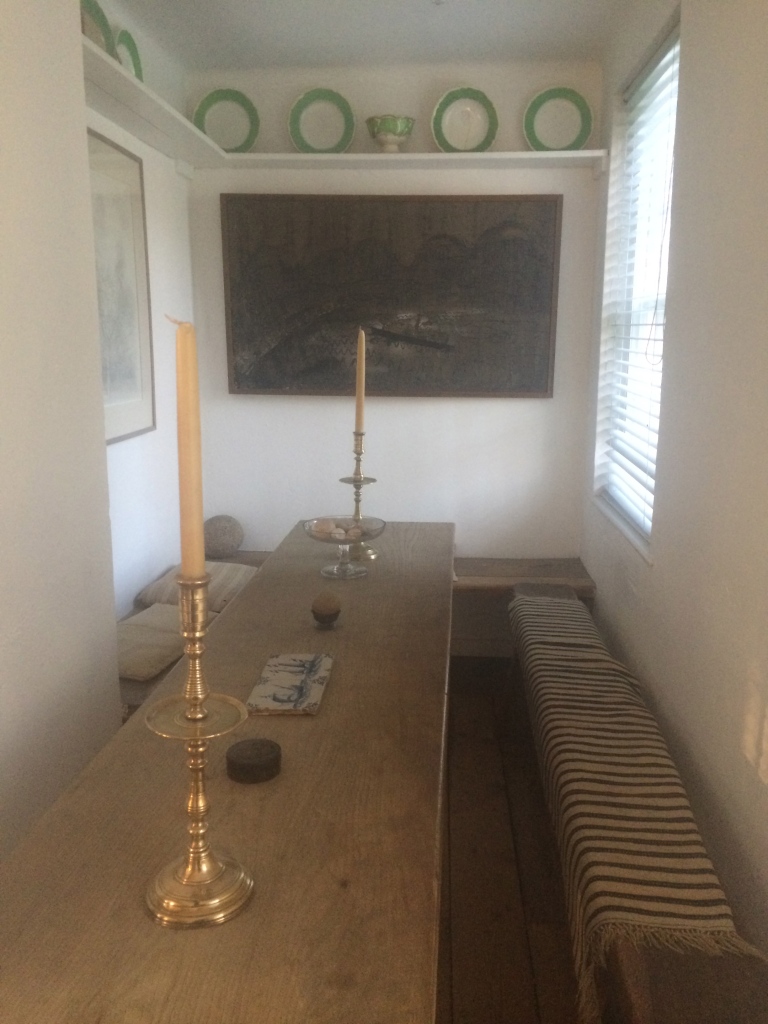
Dining area, Kettle’s Yard, Cambridge
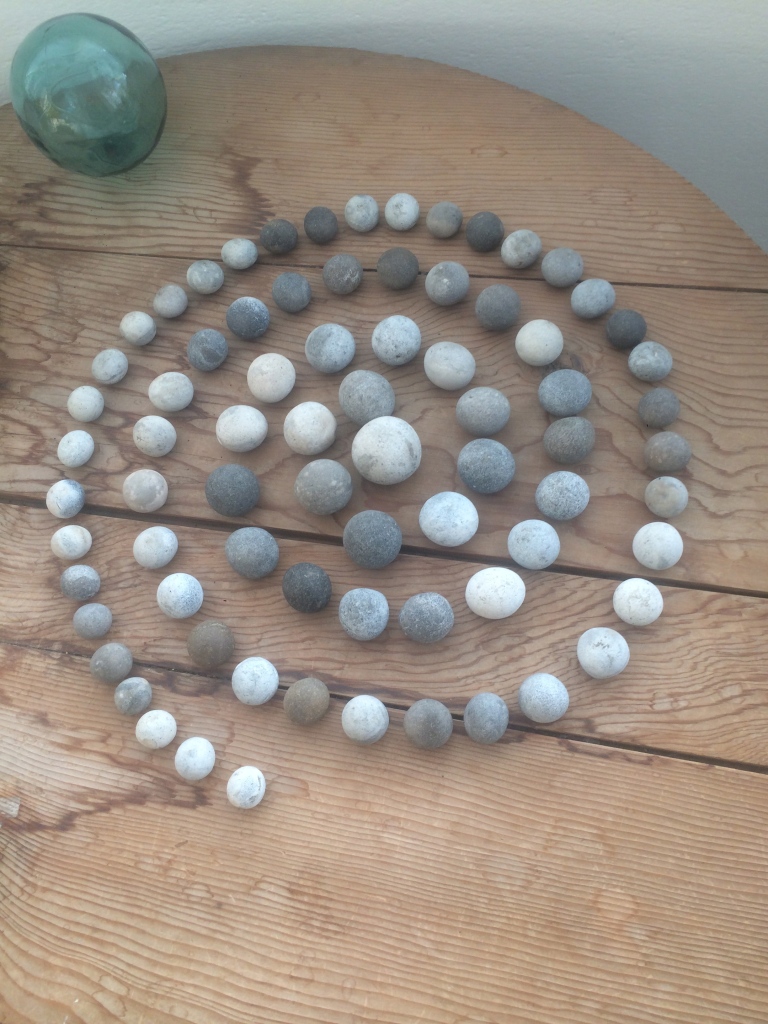 ‘Spiral of Pebbles’, Kettle’s Yard, Cambridge
‘Spiral of Pebbles’, Kettle’s Yard, Cambridge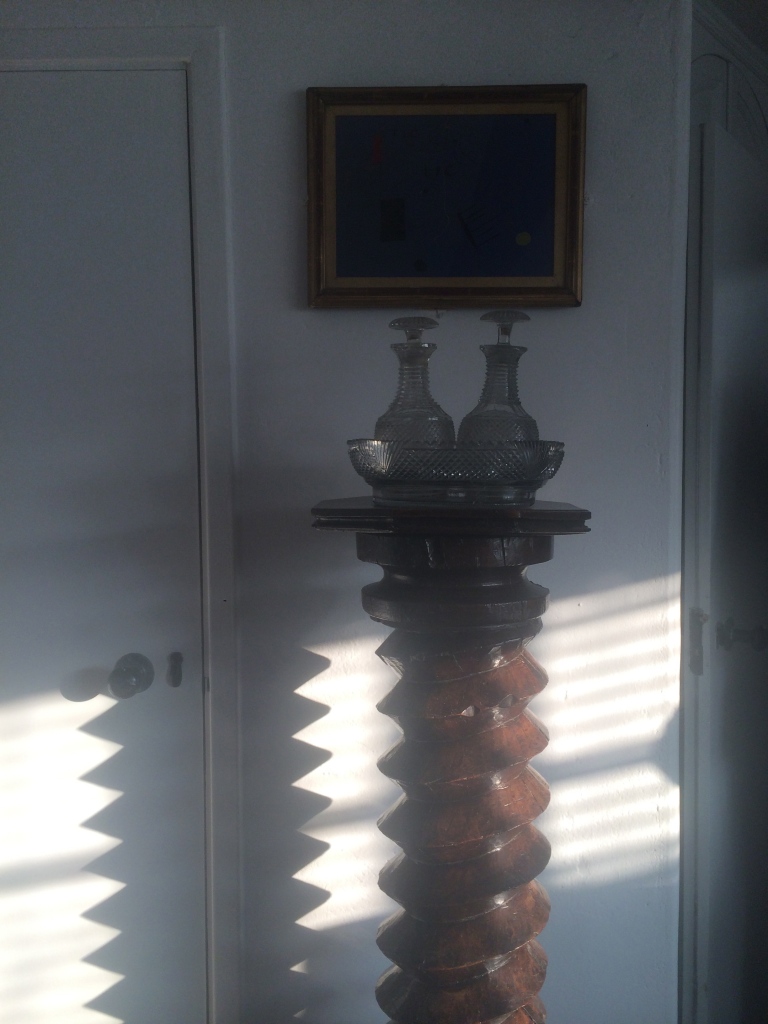 Objects and shadows, Kettle’s Yard, Cambridge
Objects and shadows, Kettle’s Yard, Cambridge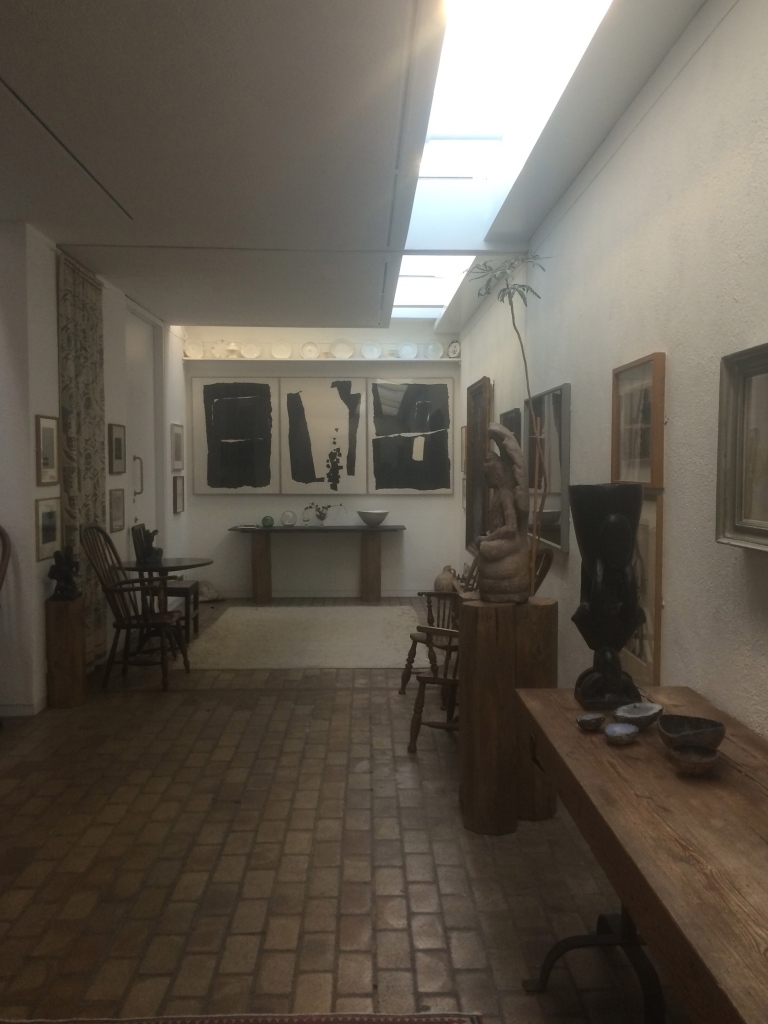 Interior Kettle’s Yard, Cambridge
Interior Kettle’s Yard, Cambridge
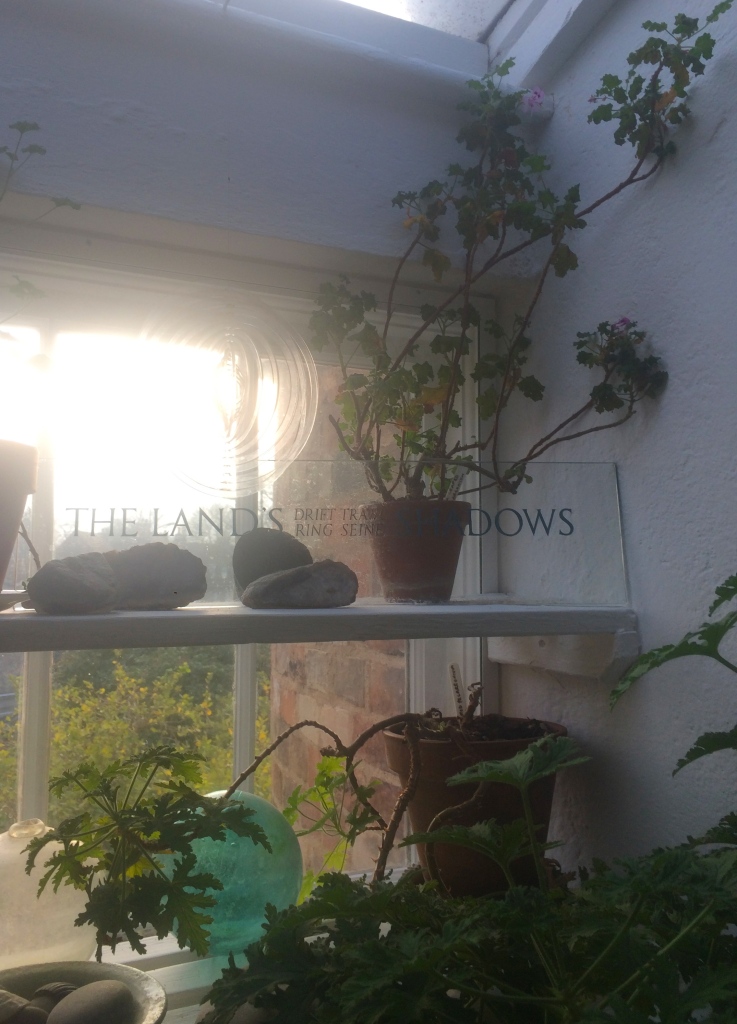
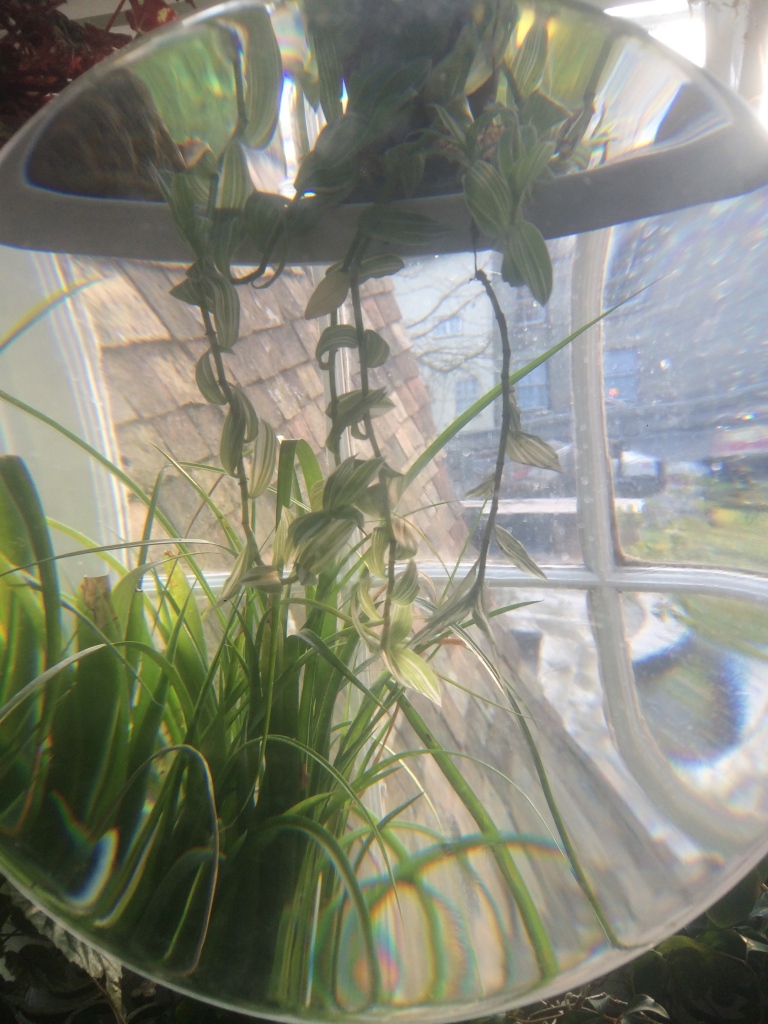
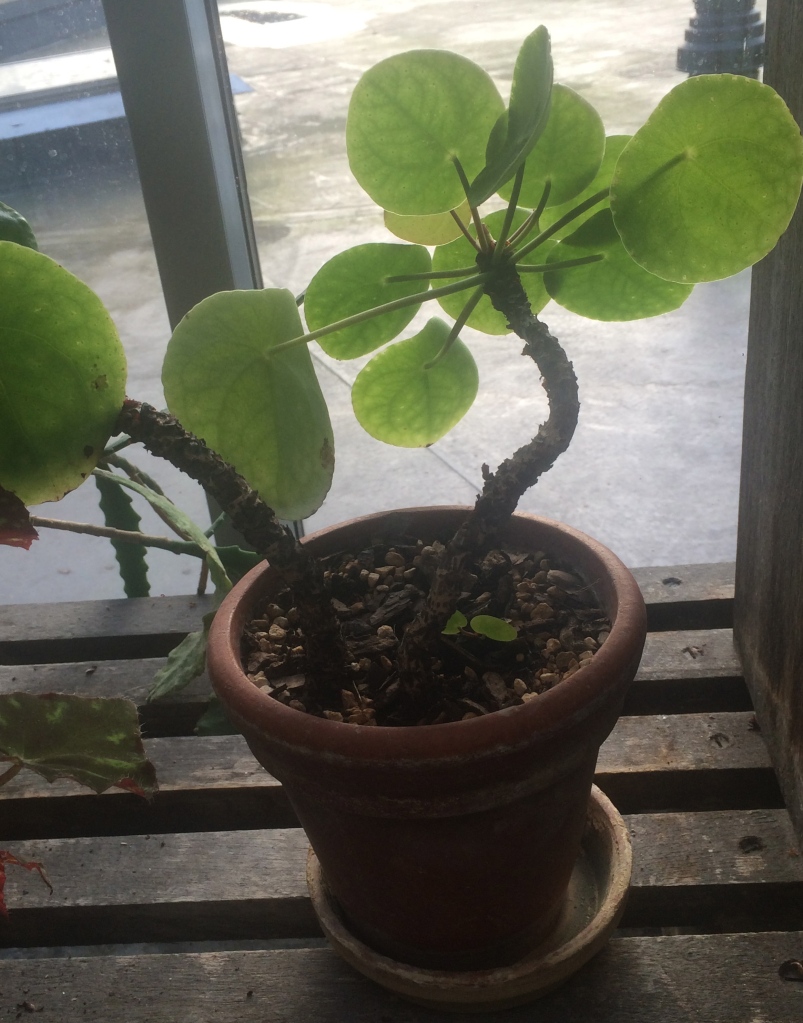 Window recess with potted plants, magnifying lens and engraved glass, Kettle’s Yard, Cambridge
Window recess with potted plants, magnifying lens and engraved glass, Kettle’s Yard, Cambridge
As Edmund tracks the centuries-old hunger both to create and collect the ‘white gold’ that is porcelain, it is riveting to follow his considered account of his own fiercely pioneering journey. A degree in English Literature was followed by two tough years in the Black Mountains “My friends were in London with jobs, writing , partying … and I was making dishes, unglazed, rough oatmeal brown on the outside, and green on the inside, pots to disappear into the landscape.”
I visited Edmund in Herefordshire and made a ridiculous chart to encourage him as he laboured to build his first kiln and I still treasure one of his – now unlikely – rich brown bowls:
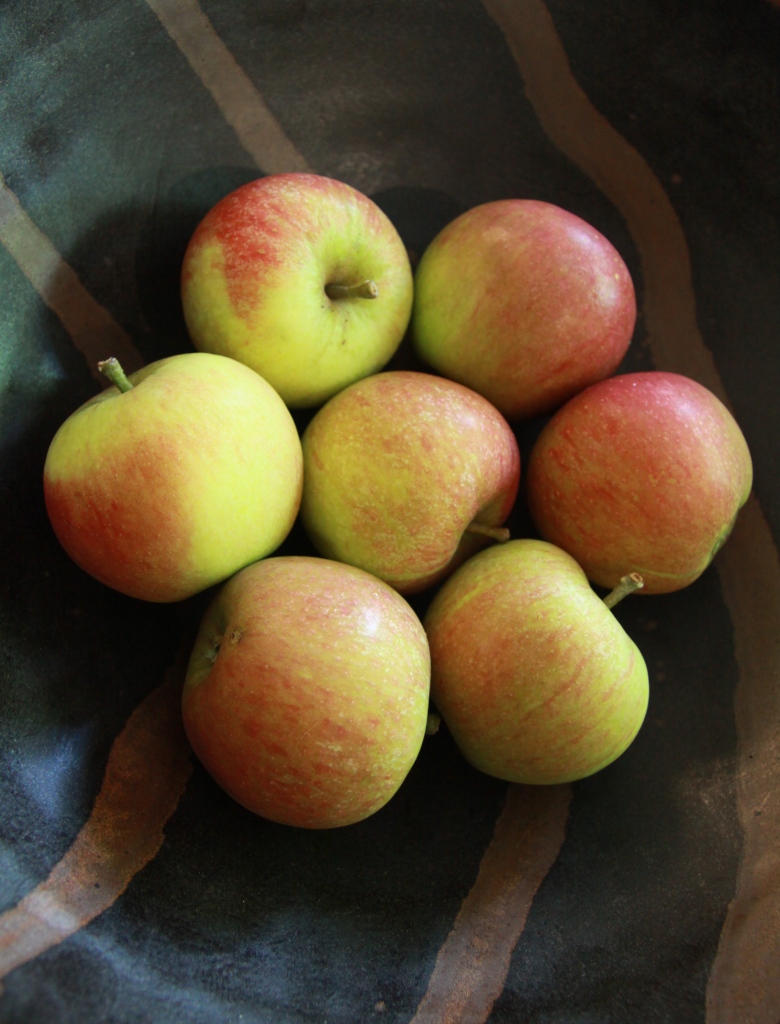
Cox’s apples in a brown fruit bowl by Edmund de Waal
I visit him in Sheffield too, where he has set himself up to make pots and study Japanese. “I got to work. As I was starting again, I chose white”. Edmund shares with us his longing to get the white right. “I want poems that compare white porcelains to smoke coiling up from a chimney, or from incense on an altar, or mist from a valley.” Finally a year’s scholarship to Japan “I know how this porcelain feels. Japan is where my porcelain changed.” From now on, Edmund is unstoppable.
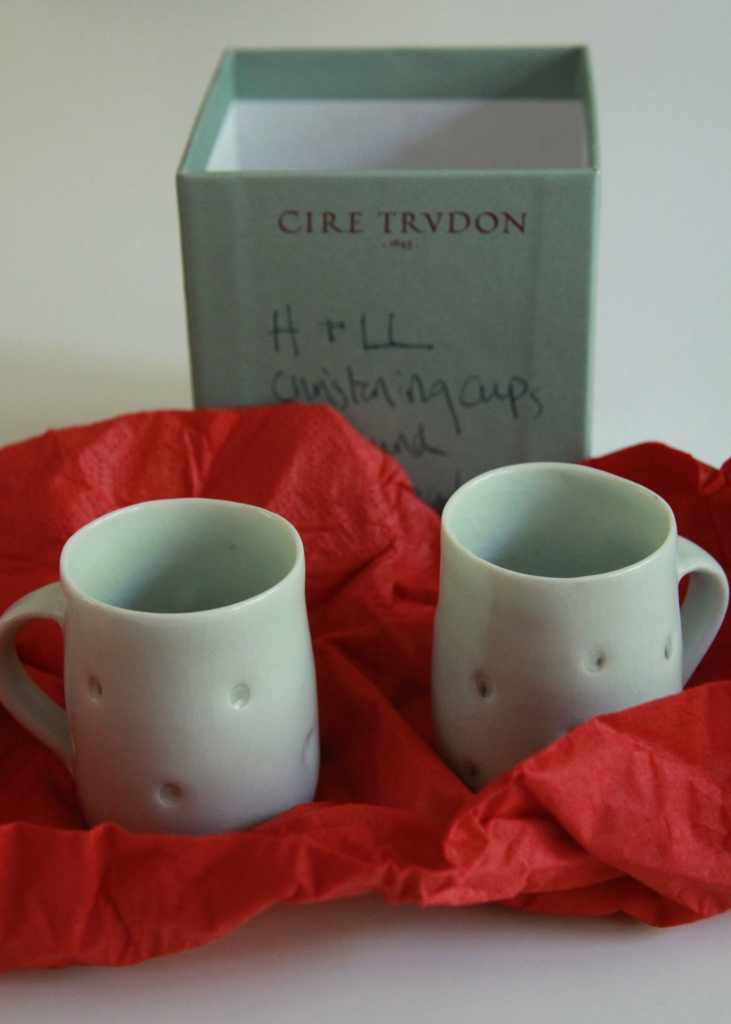 Thin white porcelain – Christening mugs for our twin boys, 1996
Thin white porcelain – Christening mugs for our twin boys, 1996
‘The White Road’ takes us from medieval Florence, where porcelain is so precious that drinking from a porcelain cup is thought to prevent poison, to Nazi Germany where a chilling production line is revealed in the belief that “white porcelain is the embodiment of the German soul.” In 1708 in Dresden, after years of perilous pioneering, the mathematician Tschirnhaus “makes himself a little jar. It comes out ‘half translucent and milky white, like a narcissus.”
Throughout the book Edmund tries to weigh up the fragile and tantalising quality of white itself. Herman Melville’s description from Chapter 42 of Moby Dick, ‘The Whiteness of the Whale’ is a key moment “In many natural objects, whiteness refiningly enhances beauty, as if imparting some special virtue of its own, as in marbles, japonicas and pearls” – and he talks eloquently about the quality of light on his own work: “I’m watching the light play on the wall opposite me …great Gerhard Richter-like smudges across the top that move across an installation I made last year for Sue, seven stacked dishes inside a white lacquered cabinet. The top dish is gilded on the inside so that there is a reflective halo above it.”
I love the book because at the root of everything is Edmund’s drive to look harder, read harder and keep making pots with his hands. He is generous and inspiring. No-one is too young or too old to fall under his spell.
Our son Arthur aged three at Edmund’s studio.
And if the book is not enough, Edmund has curated an almost secret collection of exquisite white objects, from Turner’s porcelain watercolour palette to the death mask of a Royal Academician, in the Library and Print Room at the Royal Academy.

Two handled porcelain cup & saucer, Meissen, Germany, c.1715. Collection of Edmund de Waal
Bust of a woman, possibly Ippolita Maria Sforza, after Francesco Laurana (1452-1502). C.19th plaster cast, RA Collections
Horatio Ross, Fir trees on the banks of Dornoch Firth between Ardgay and Fearn, c. 1850-60. Waxed paper negative, Hans P Kraus Jr, New York
And what about white in gardens? I decide to head to Sissinghurst to visit Vita Sackville-West’s White Garden to concentrate, if only for an afternoon, on the matter.
Sissinghurst Castle, Kent
Unsurprisingly perhaps, using white in the garden is more demanding than you might at first suppose. The photographer Andrew Lawson, in his newly republished classic, ‘The Gardener’s Book of Colour’, has wise and practical advice: “the brilliance of white means that the shapes and patterns that the white flowers make catch the eye and so are more intrusive than those of other colours in a mixed colour planting. Because they are light-reflecting, flowers with a solid silhouette, such as lilies or phlox, tend to stand out most among other darker colours.”
I am looking out, as I type this, at a rather startlingly clump of white japanese anemones in my own garden that draws the eye away from the fading pinks and yellowing greens elsewhere, and needs to be divided and broken into smaller groups as soon as possible.
Japanese anemone ‘Honorine Jobert’
Lawson continues: ” Plants that have sprays of tiny white flowers on the other hand, like gypsophila or Crambe cordifolia, create a misty diaphanous effect that is bright without being intrusive. Other colours seen through this translucent haze are fragmented and seem to shimmer.”
As with porcelain, there are of course endless subtle distinctions to watch out for between the whites of flowers. Very few turn out to be pure white and, as Nori and Sandra Pope lament in ‘Colour by Design’ (the account of their brilliant homage to colour in the garden they made in the 80’s at Hadspen, Somerset ) “please note that very often white flowers die badly – their petals turn brown and cling to the plant instead of dropping off.” And white planting schemes, because of their simplicity, draw particular – if you are not careful, unforgiving – attention to the shapes, sizes and textures of flowers and foliage.
Generally, however, as Lawson says “the effect of white in gardens is to lighten them and make the mood more cheerful” and this is especially so in shade. I love Gertrude Jekyll’s description of white foxgloves illuminating a patch of woodland – she writes of the way they “spire up among the birches.”
Perhaps the ultimate trigger for the creation of an all white garden is the dream of a ‘moonlight garden’. White flowers (as well as pale pinks and creams) have a luminous quality and will remain visible after dusk. Vita Sackville-West’s winter vision of sitting on an imagined seat made of rough oak and living box and looking out at her new garden is as intoxicating as ever:
” When you sit on this seat you will be turning your backs to the yew hedge and from there I hope you will survey a low sea of grey clumps of foliage, pierced here and there with tall white flowers….I cannot help hoping that the grey ghostly barn owl will sweep silently across a pale garden, next summer, in the twilight, the pale garden that I am now planting under the first flakes of snow.”
It is Saturday afternoon and I have not been to Sissinghurst for years. I am easily distracted on my pilgrimage. Firstly by the simple, handsome planters made from salvaged galvanised cattle troughs which look wonderful planted with just white valerian – Centranthus ruber ‘Albus’ – against whitewashed timber, or the billowing purple and white Salvia leucantha against warm brick.
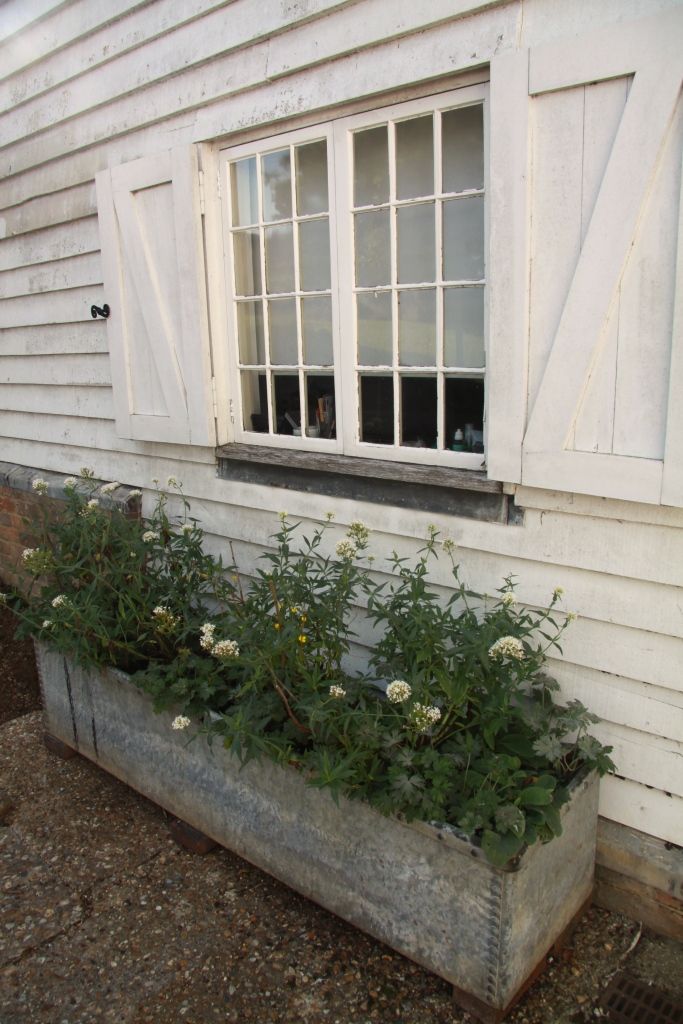 Galvanised cattle trough planted with Centranthus ruber ‘Albus’
Galvanised cattle trough planted with Centranthus ruber ‘Albus’
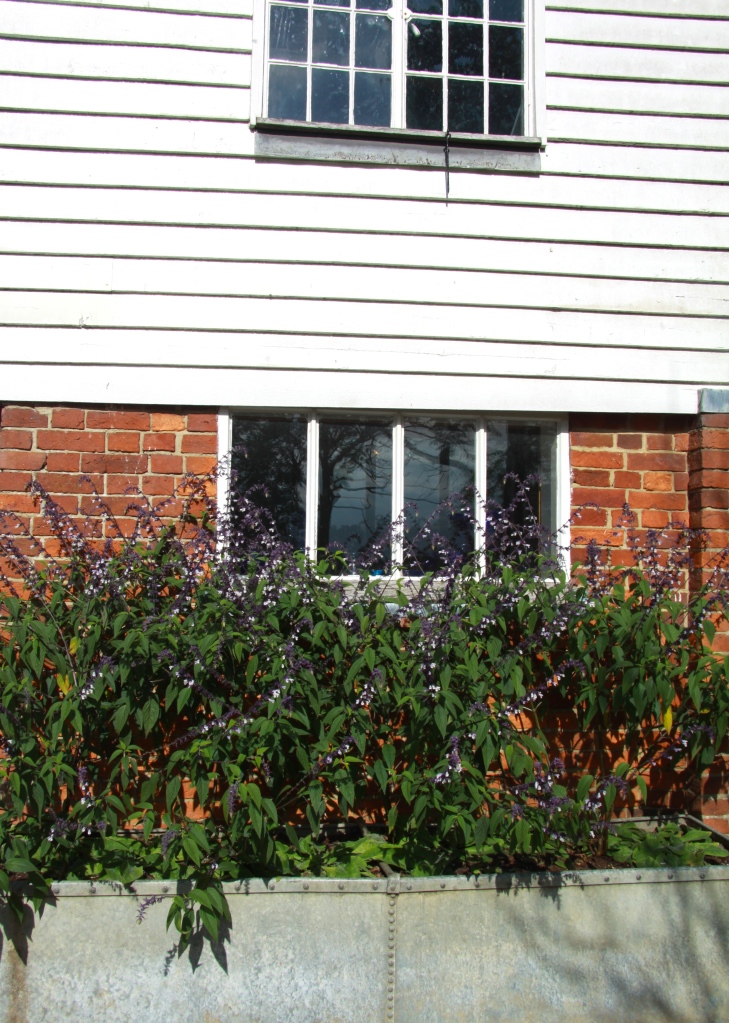
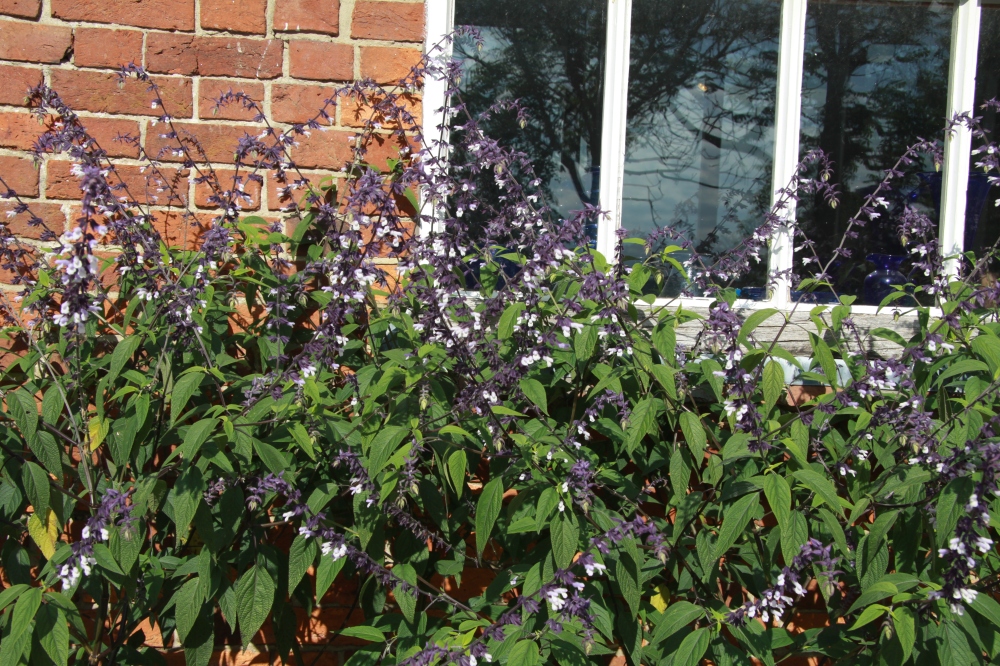 Galvanised cattle trough planted with Salvia leucantha
Galvanised cattle trough planted with Salvia leucantha
I am struck again by the Sackville-West/Nicholson brilliance of opening up the brick barn to create a perfectly framed view to the Kent countryside beyond the garden – and by the gorgeous patterns and shades of red in the brick itself:
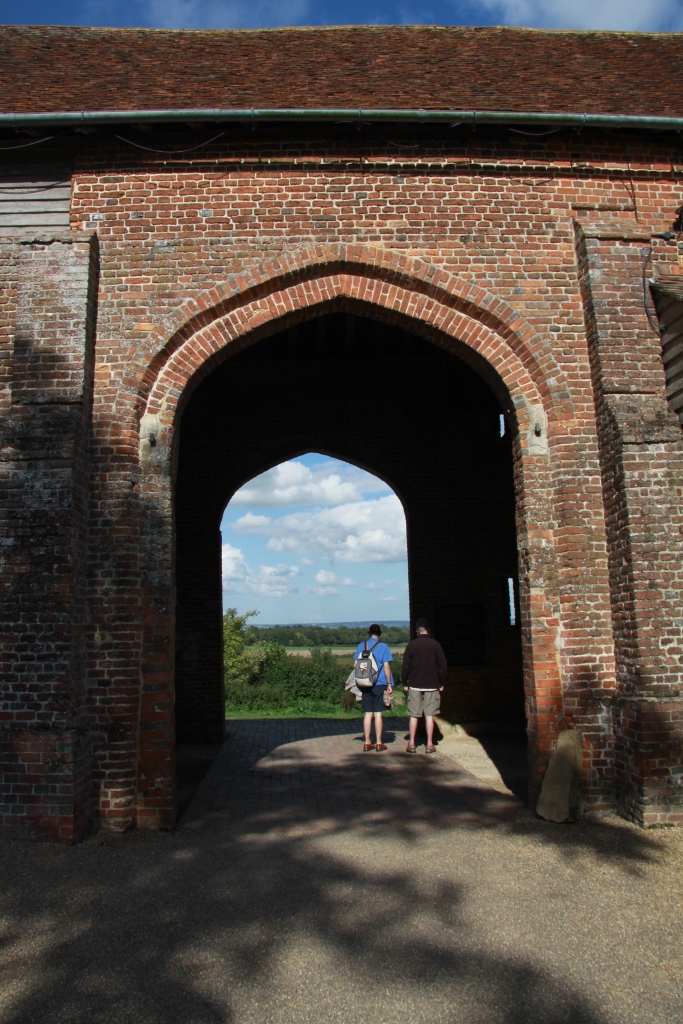 Framed view through barn, Sissinghurst
Framed view through barn, Sissinghurst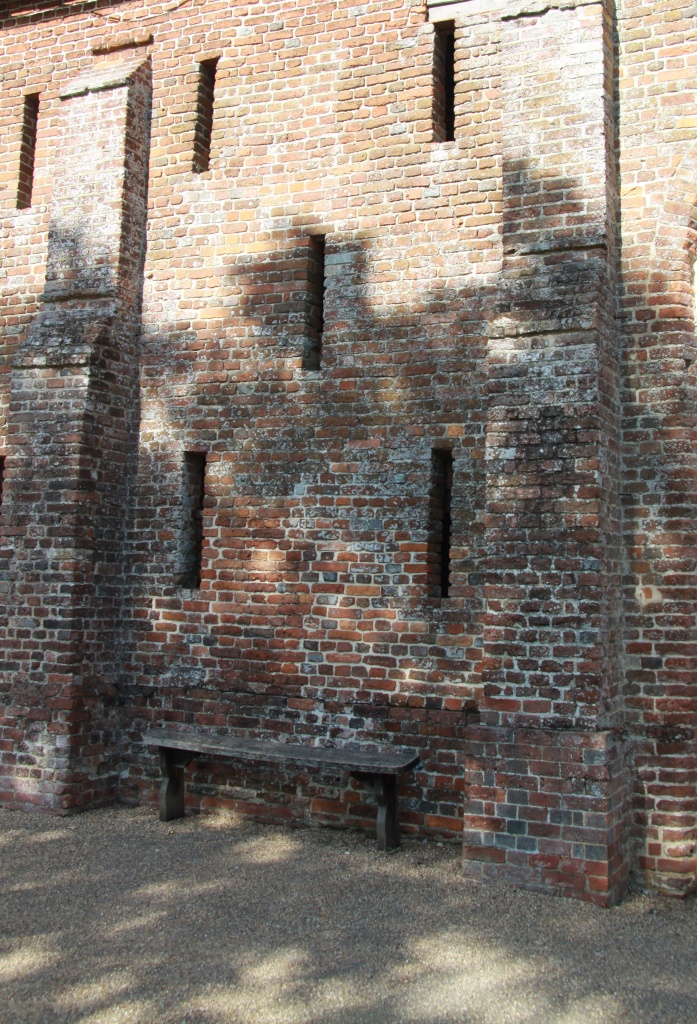 Barn wall, Sissinghurst
Barn wall, Sissinghurst
This is a garden with wonderful bones. There are patterns and rhythms everywhere you look. Here the brilliant emerging shoots light up the dense framework of pollarded limes:
Here handsome, dark soldiers of Irish yew, cast dark egg-shaped shadows away from the pale strip of path:
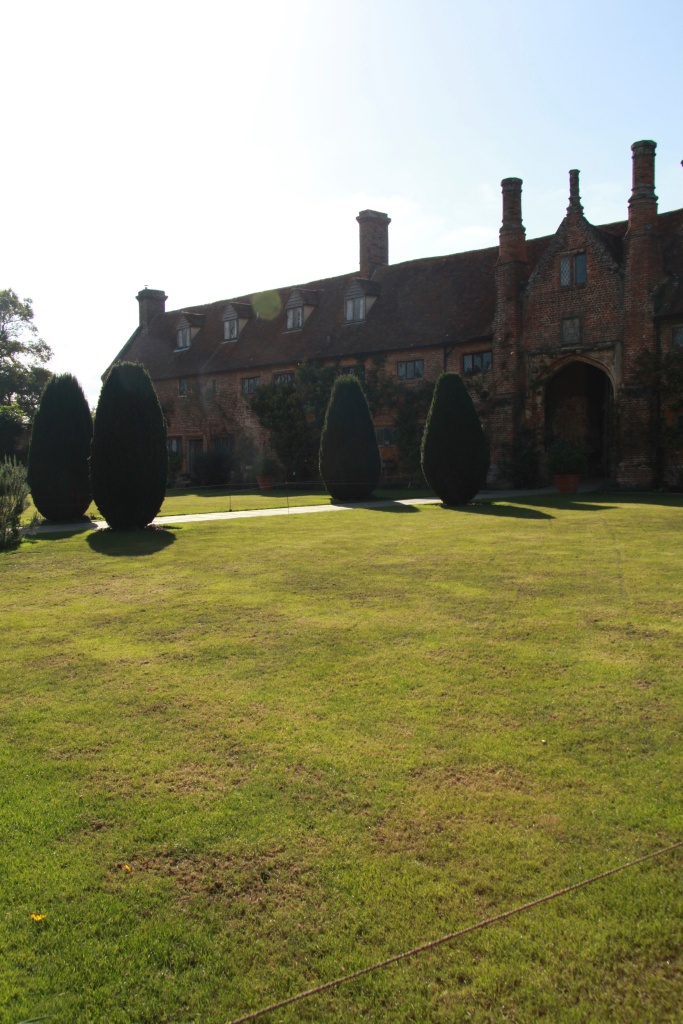 Irish yews lining the path, Sissinghurst
Irish yews lining the path, Sissinghurst
Within the entrance arch there is a flurry of colour in vases to entice you:
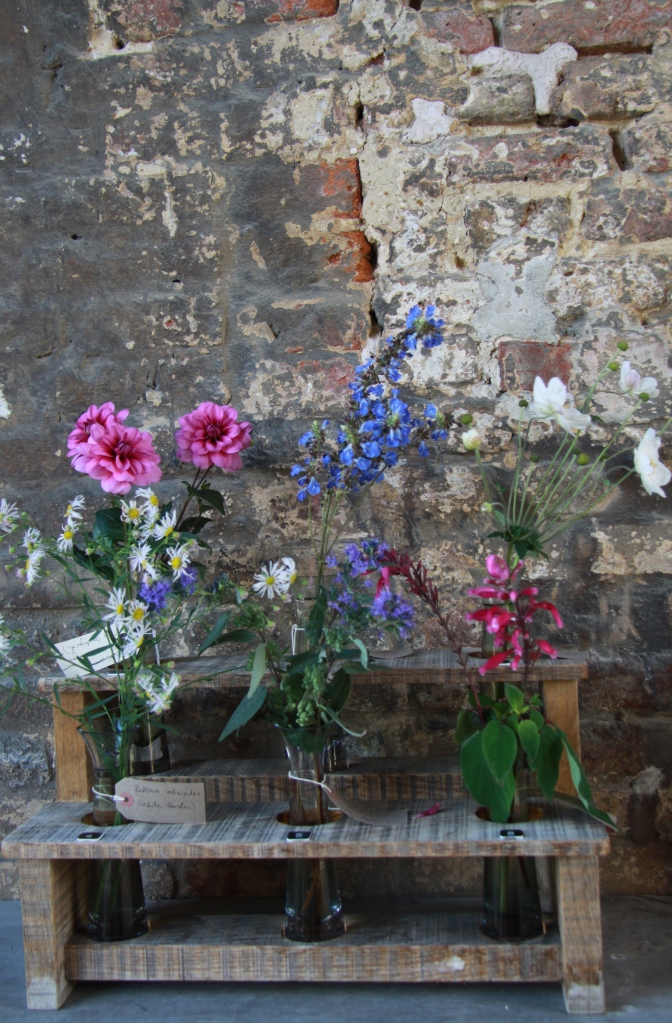
From top left to right: Dahlia ‘Pink Michigan’, Salvia uliginosa, Anemone japonica ‘Honorine Jobert’, Boltonia asteroides, Caryopteris x clandonensis, Salvia involucrata bethellii
I feel encouraged now to look at everything closer up – the delicate creamy bells and twining foliage of Clematis rehderiana – in such perfect scale with the diamond leaded glass window panes – and the solid, speckled antique-looking fruits of ornamental quince (Chaenomeles speciosa) and, further on, fat timeless rose hips against brick:
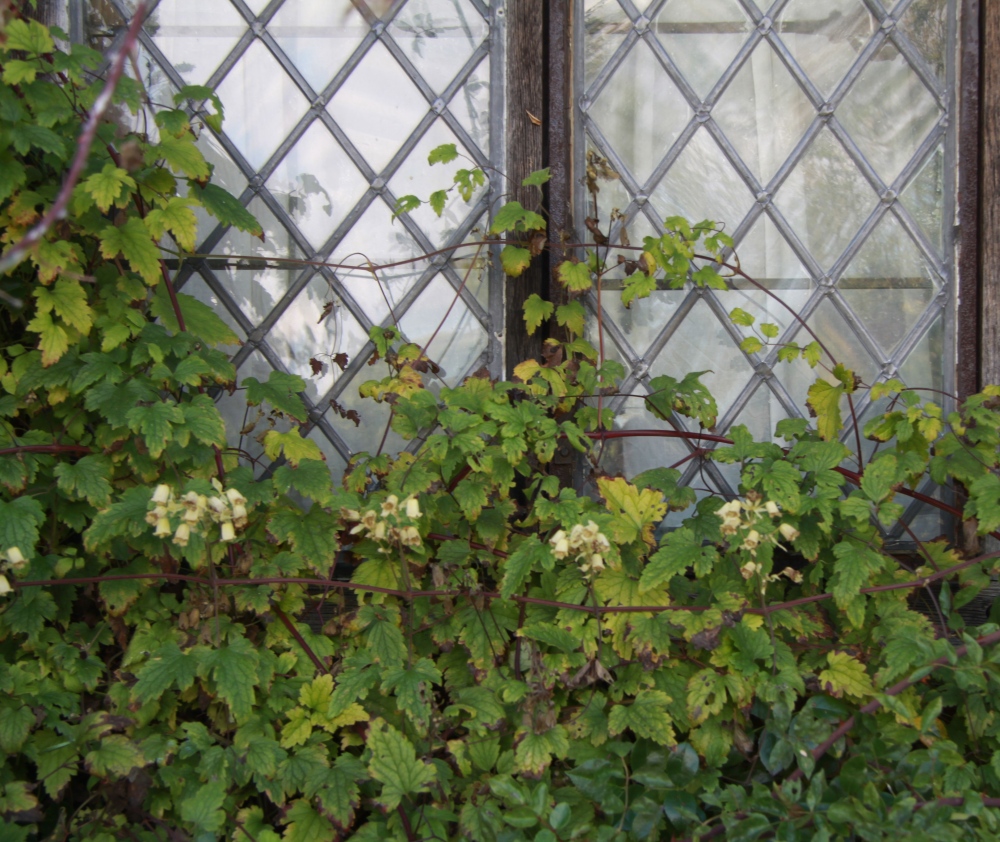
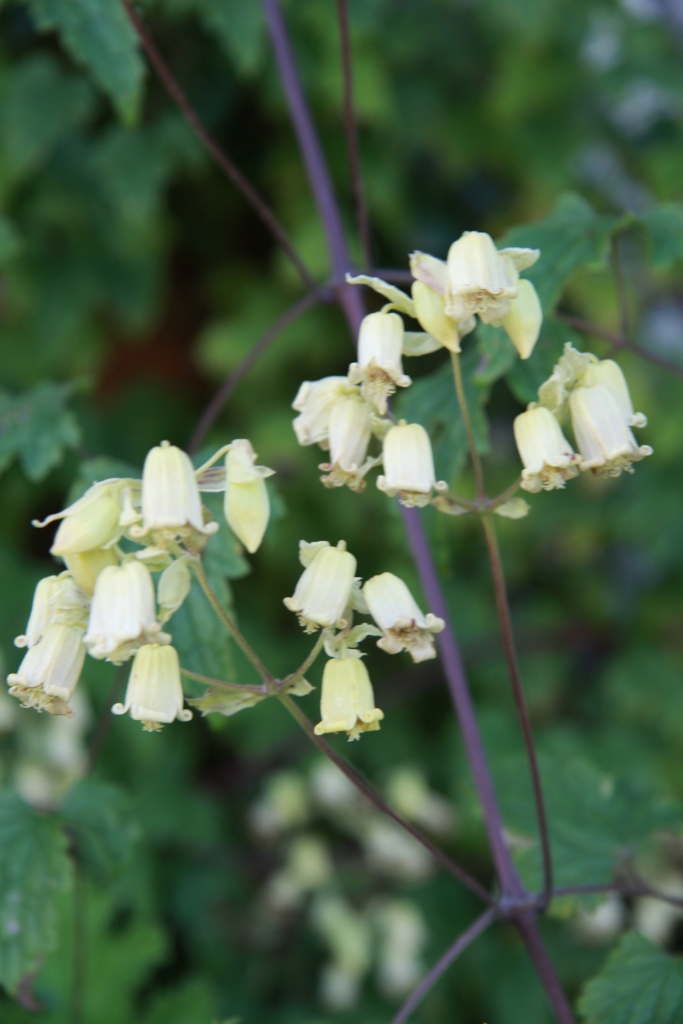
Clematis rehderiana
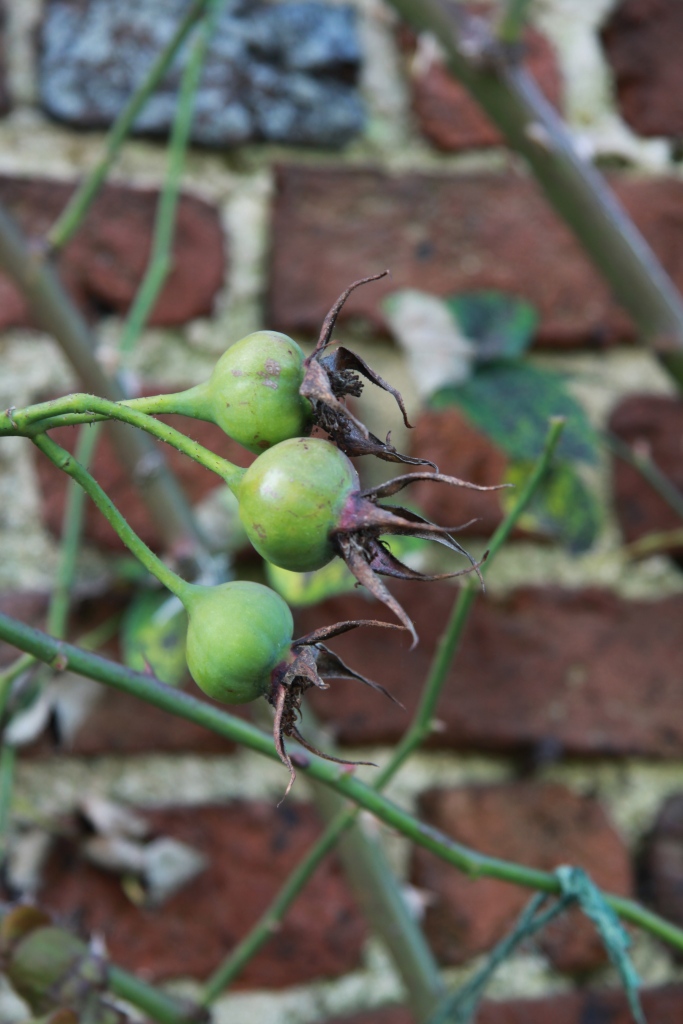 Fruit of ornamental quince above, rose hips below
Fruit of ornamental quince above, rose hips below
Wherever they can, the plants are having their tousled, exuberant, last-gasp September burst:
Soaring rose branches, dusky pink flowerheads of Abelia grandiflora and Solanum jasminoides ‘Alba agains the wall of The Tower Lawn
I walk through a haze of rich pinks – Salvia, dahlias, asters, cleomes – and the very lovely shredded pink petals of Anemone hupehensis japonica var. ‘Prinz Heinrich’.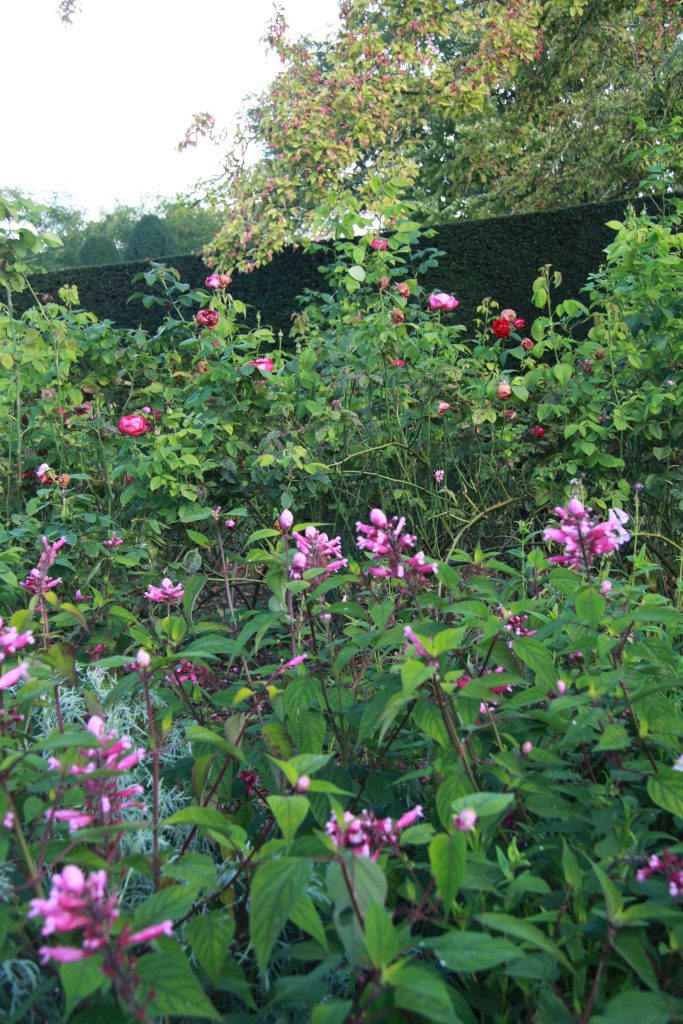
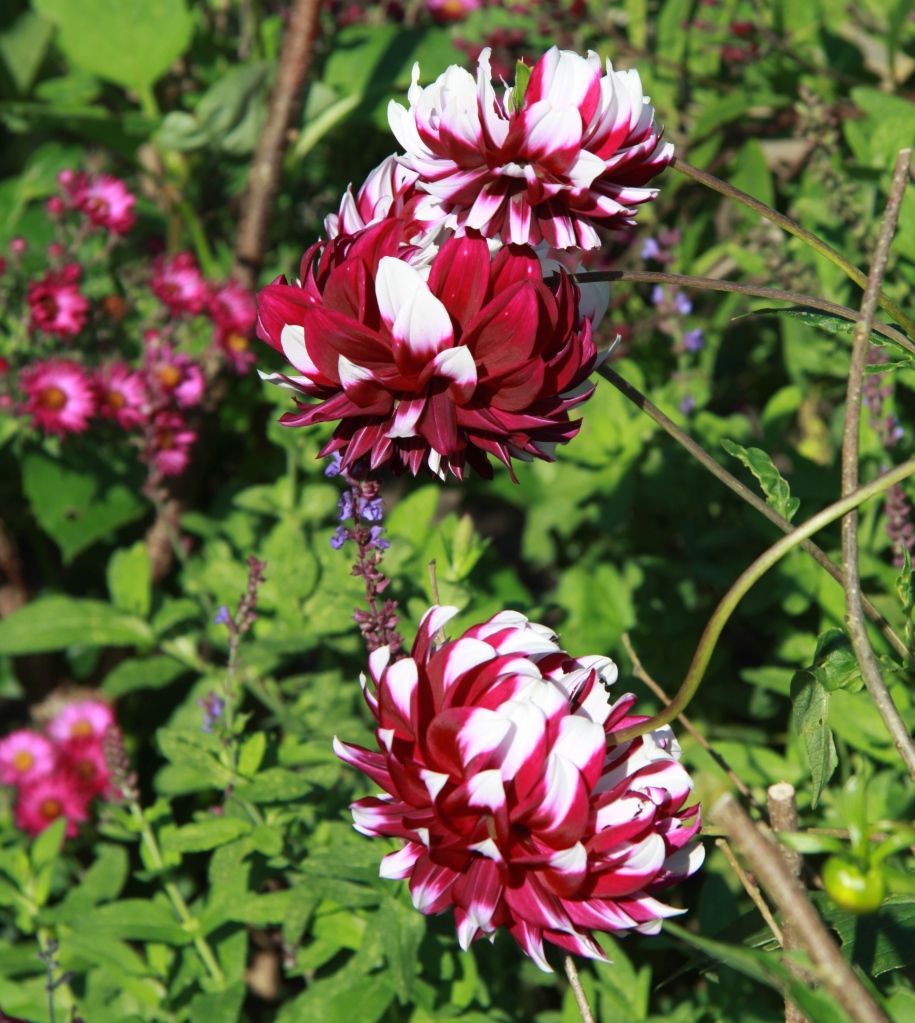

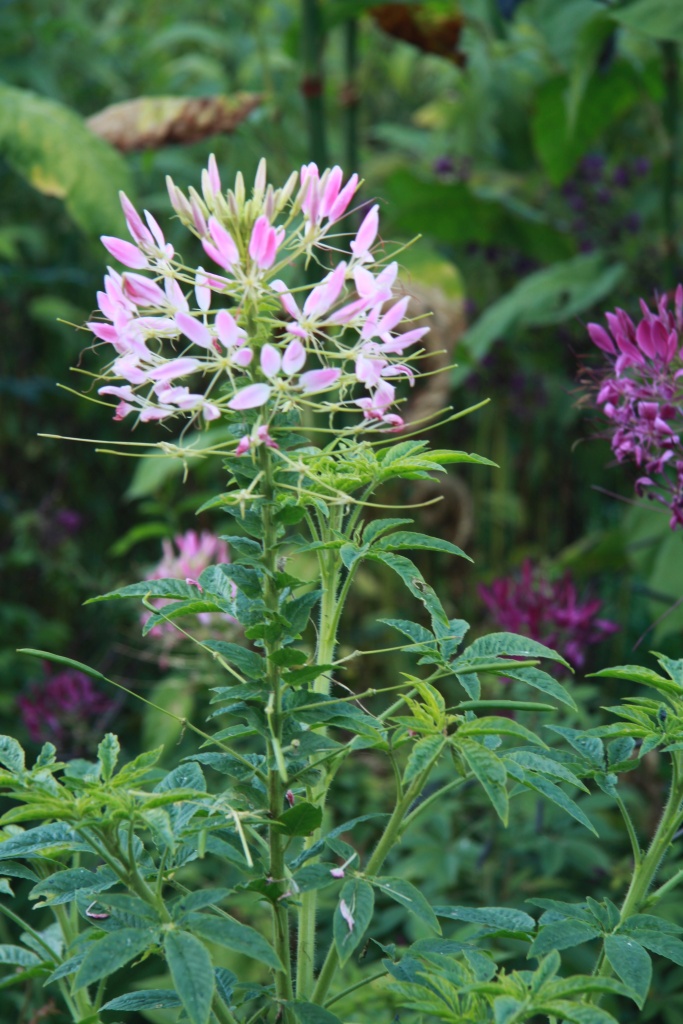
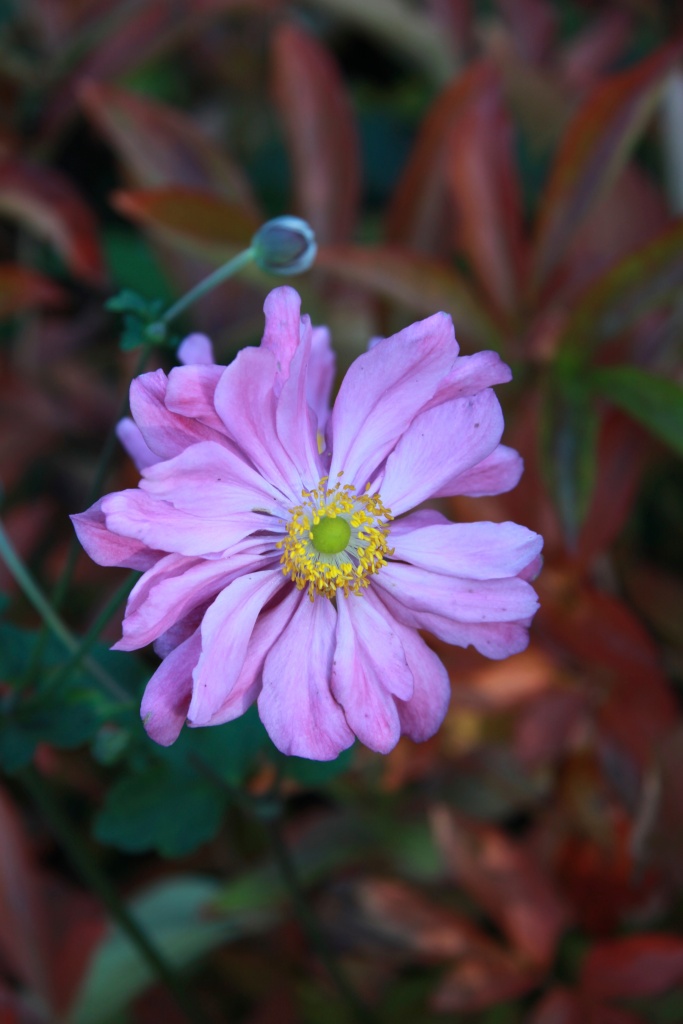
Anemone japonica hupehenis var. ‘Prinz Heinrich’
On this hazy September afternoon, everything comes together in the Cottage Garden – which has always been filled with hot colours. Apparently both Vita Sackville-West and her husband Harold Nicholson claimed this ‘sunset’ scheme as their own idea. I love the stormy silhouette of rounded black green irish yews and the tapering sky-scratching poplars beyond.
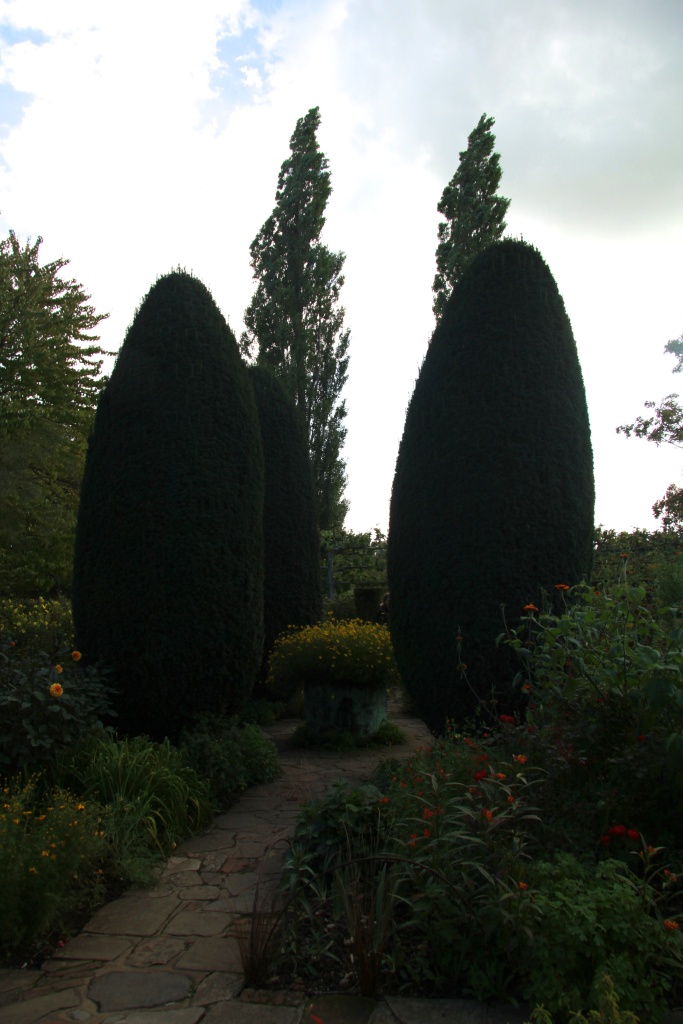 Silhouette of Irish Yews and poplars, The Cottage Garden, Sissinghurst
Silhouette of Irish Yews and poplars, The Cottage Garden, Sissinghurst
With the sun more helpfully behind me, I can revel in the towering shapes – I particularlyl ove this leggy annual, Leonotus ‘Staircase’ – and bicolour dahlias:
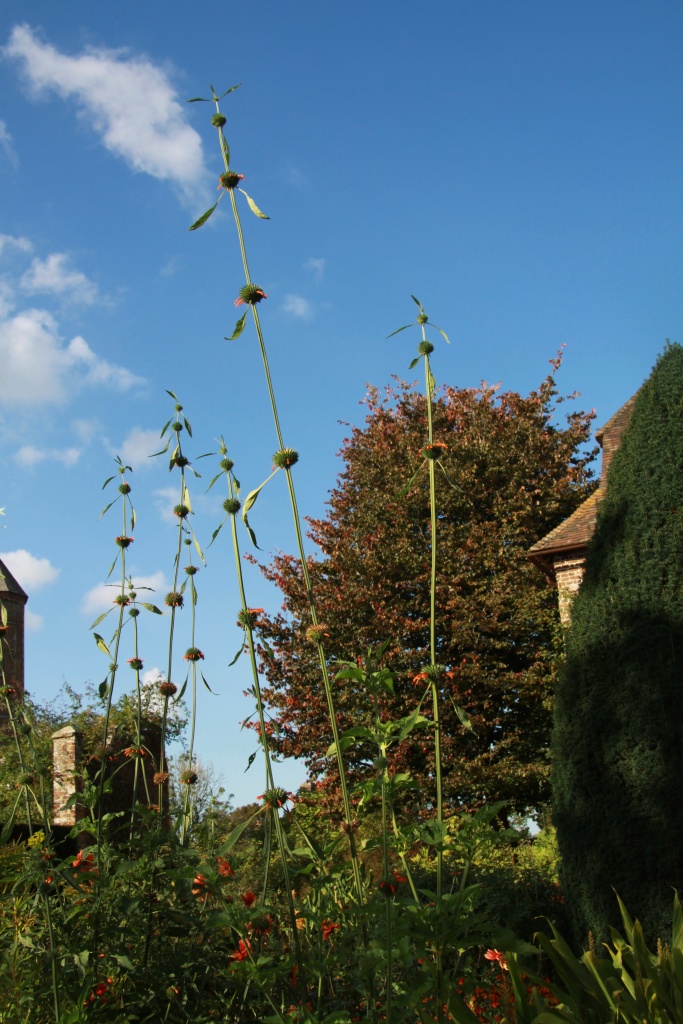
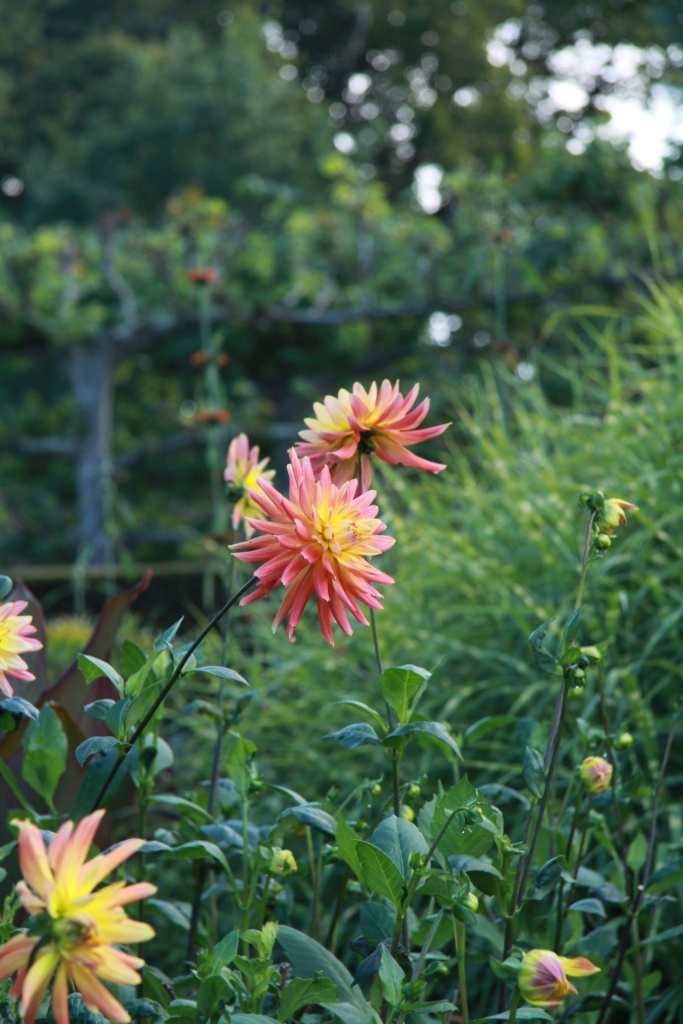
Most of all I keep coming back to the wonderful anchoring, framing effect of the towering yews at the centre of which a verdigris coated copper planter is glows magnificently, billowing over with the bright yellow Bidens ferulafolia.
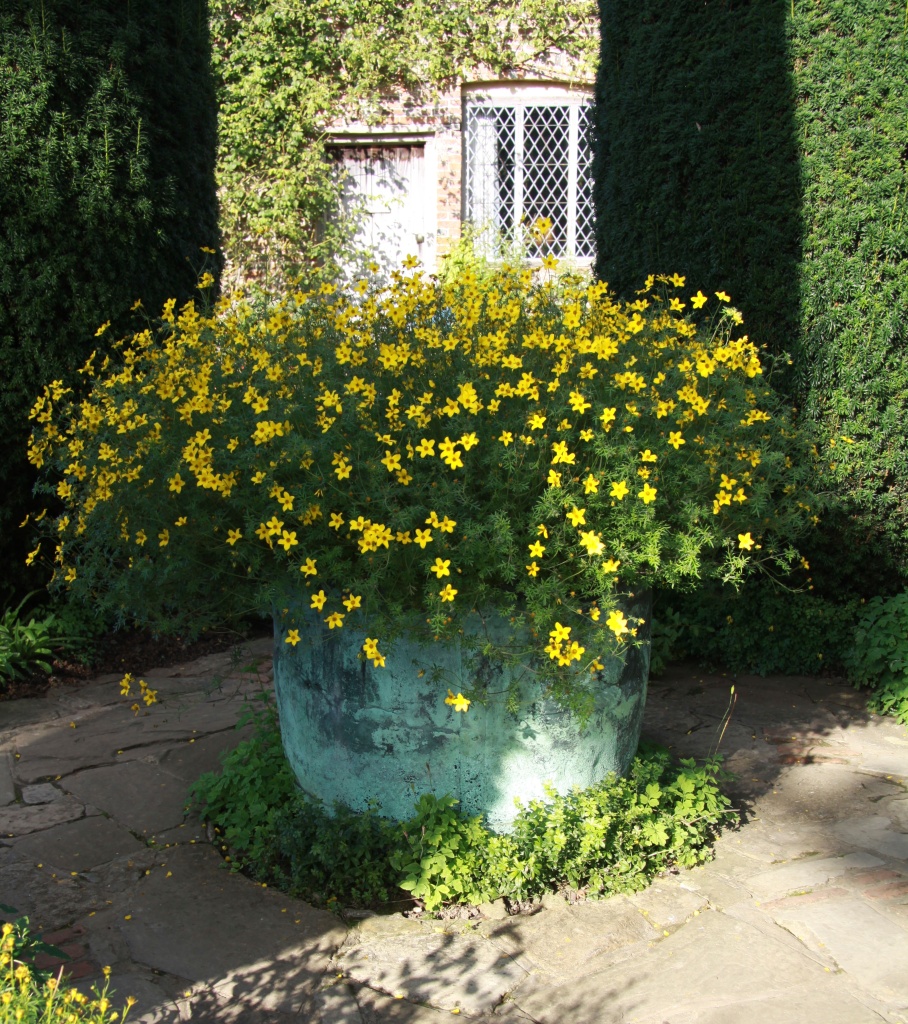
Bidens ferulafolia in a copper urn at the centre of four Irish Yews in the Cottage Garden
I have lost my husband, Nick, to a sunwarmed wooden chair against the cottage wall. It is time to go and find The White Garden:
The White Garden was always going to be something of a disappointment, I suppose – not being June when the roses would be famously powering over walls and pergolas. Not very disappointing, of course, just a bit quiet and less obvious. I need time to start to appreciate the blocky patterns and undulations of the clipped box and surges of paler planting:
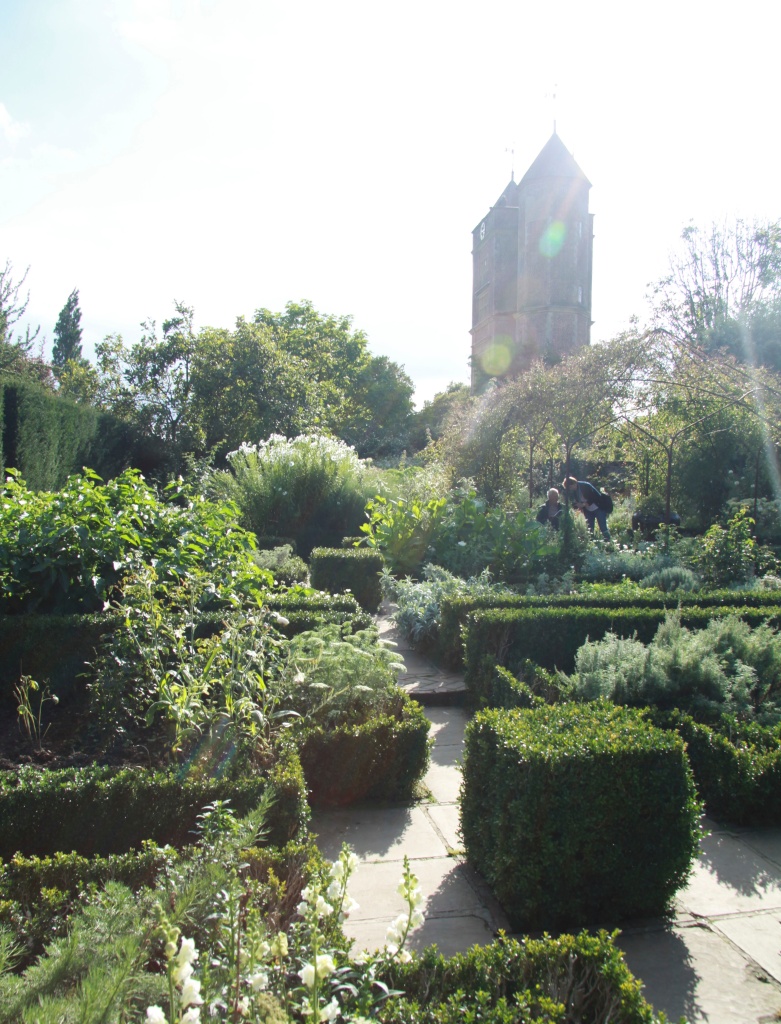
The White Garden, Sissinghurst
From some angles The White Garden is teeming and a little shapeless in that lovely end of summer way. If you look the other way, patches here and there feel a little empty and end of season:
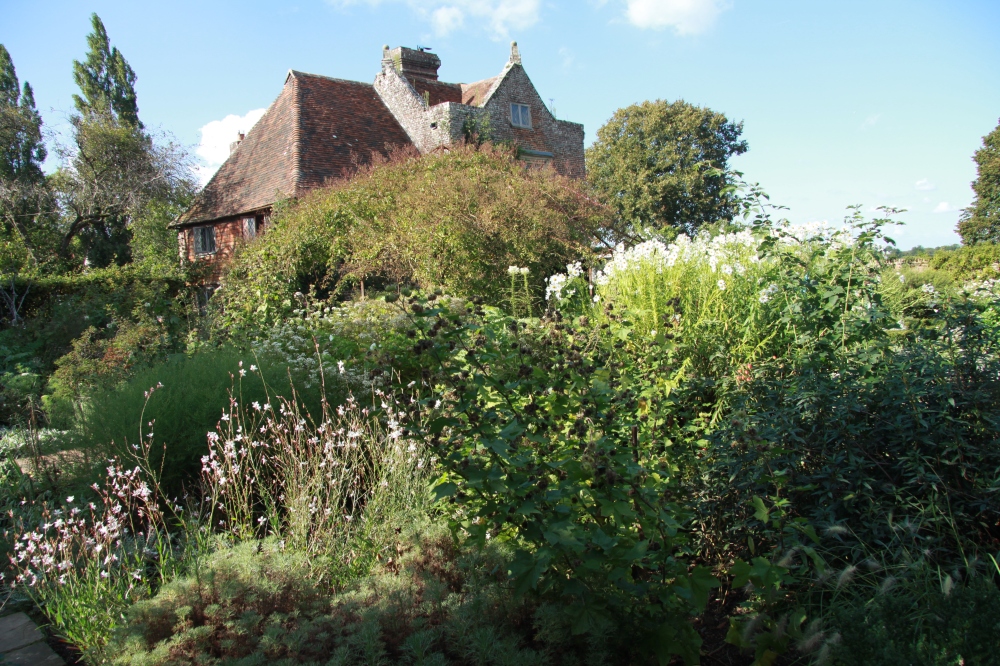
The White Garden, teeming softly
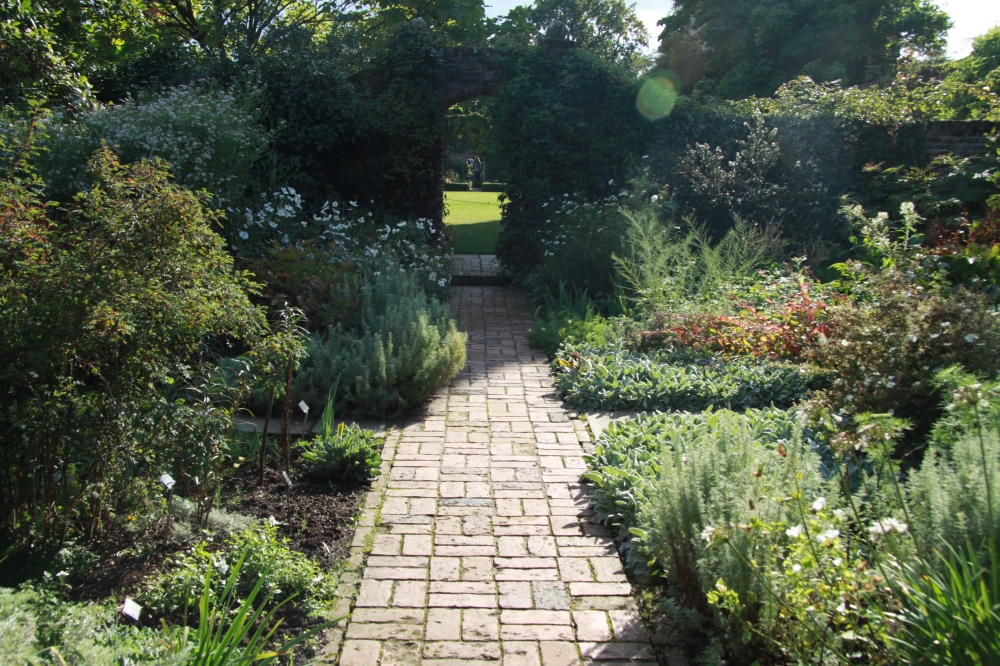 The White Garden beginning to look a little empty
The White Garden beginning to look a little empty
I like it best when there is a dense coming together of contrasting shades and textures – here the soft, velvety Stachys byzantina, the dainty wiriness of Potentilla fruticosa ‘Abbottswood’, the silvery grey of artemisia, and right at back the handsome architectural grey-green of Melianthus major:
There is space in the White Garden for the sun to light up the bright green leaved Nicotiana sylvestris like a cool summer torch. The Solanum jasminoides ‘Alba’ is going nicely crazy over an arch, and the delicate daisy we met in a vase at the entrance to the garden (Boltonia asteroides) is contrasted by dynamic, velvety green flowerheads of Agastache rugosa ‘Alabaster’.
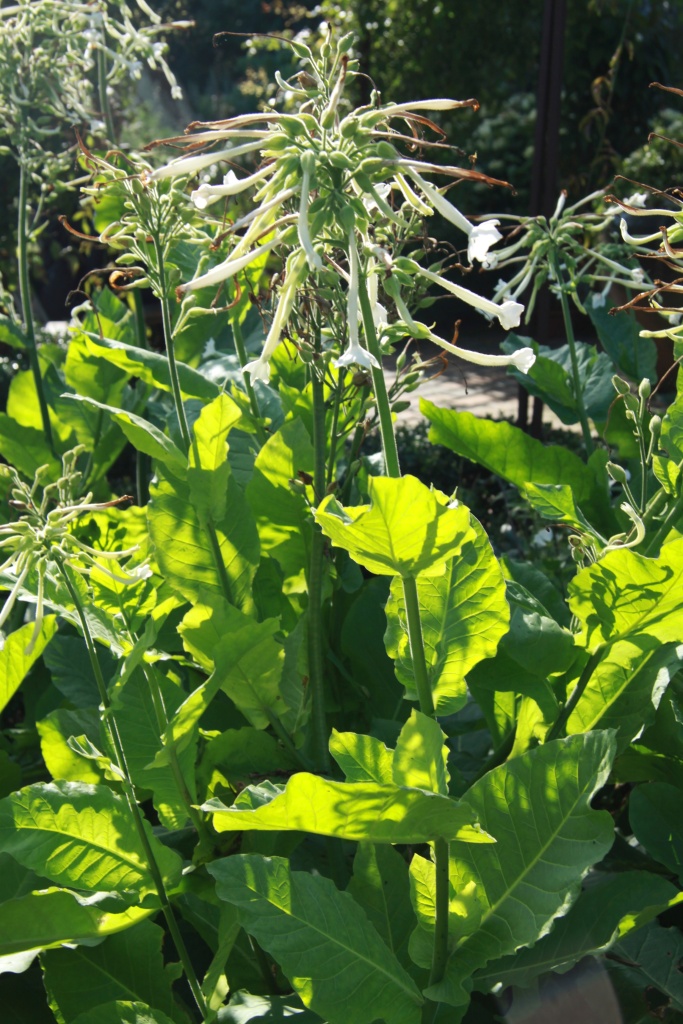
Nicotiana sylvestris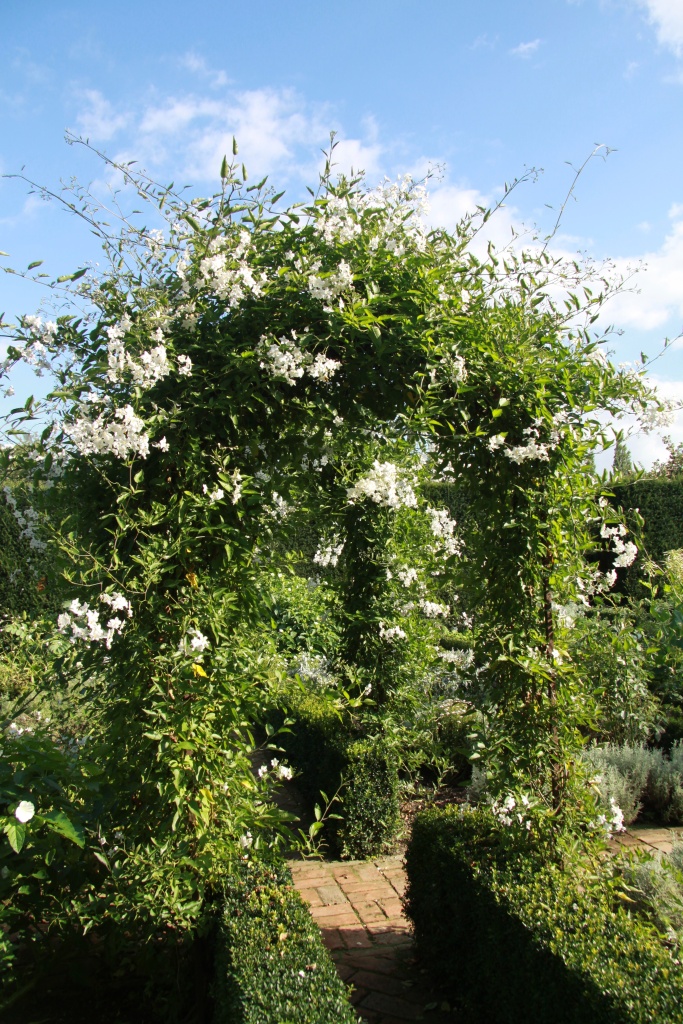 Solanum jasminoides ‘Alba’
Solanum jasminoides ‘Alba’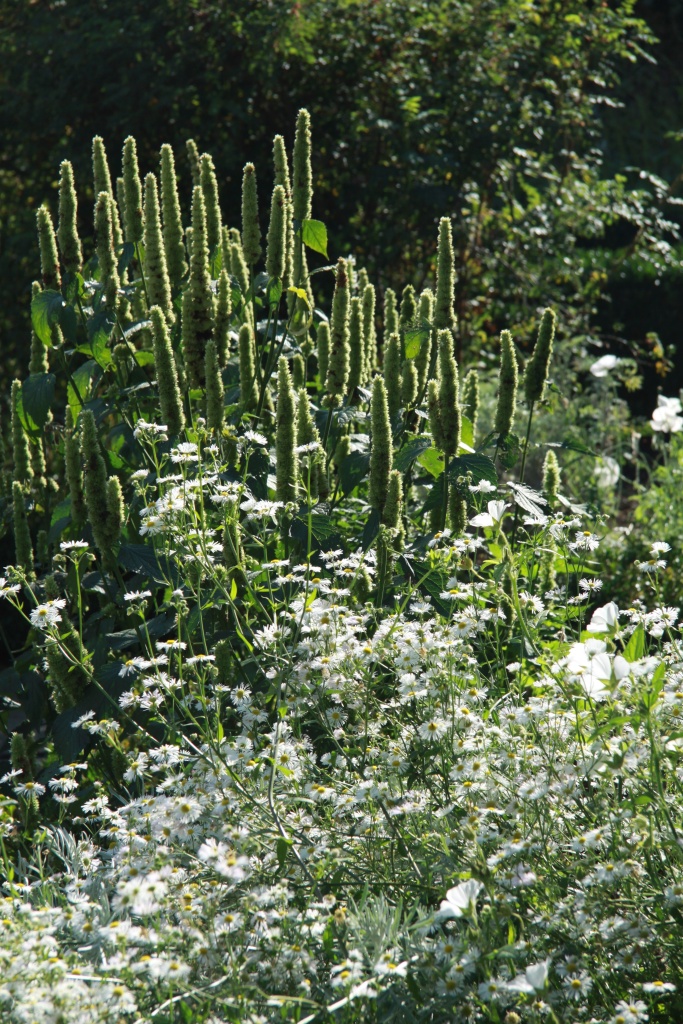 Boltonia asteroides and contrasting Agastache rugosa ‘Alabaster’
Boltonia asteroides and contrasting Agastache rugosa ‘Alabaster’
I am thinking again of Edmund de Waal and would like to collect together a few notional plants to celebrate his book ‘The White Road’ and his Royal Academy exhibition, ‘White’. Edmund is so thoughtful about placing his work – in cases, vitrines, on shelves, plinths. Should I bring together plants and vessels? My mind turns momentarily to the lovely hand coloured photographs of Constance Spry flower arrangements in her books ‘Winter and Spring Flowers’ and Summer and ‘Autumn Flowers’ – so outrageously staged and old fashioned that I think they might zoom back into our way of thinking any time soon:
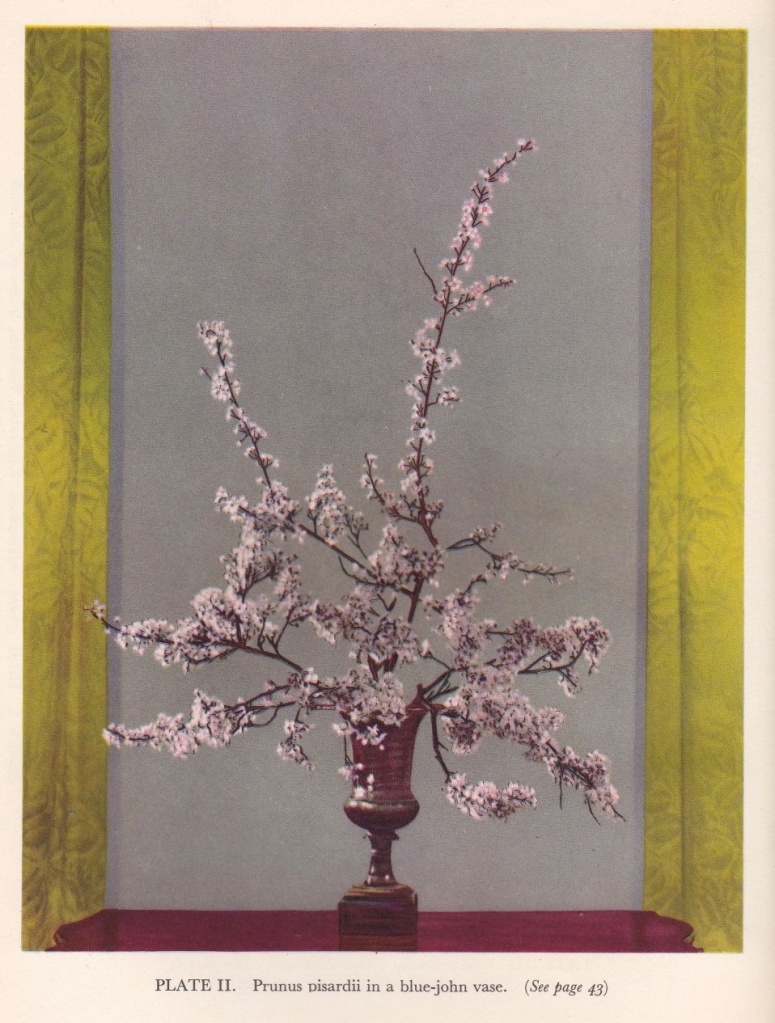
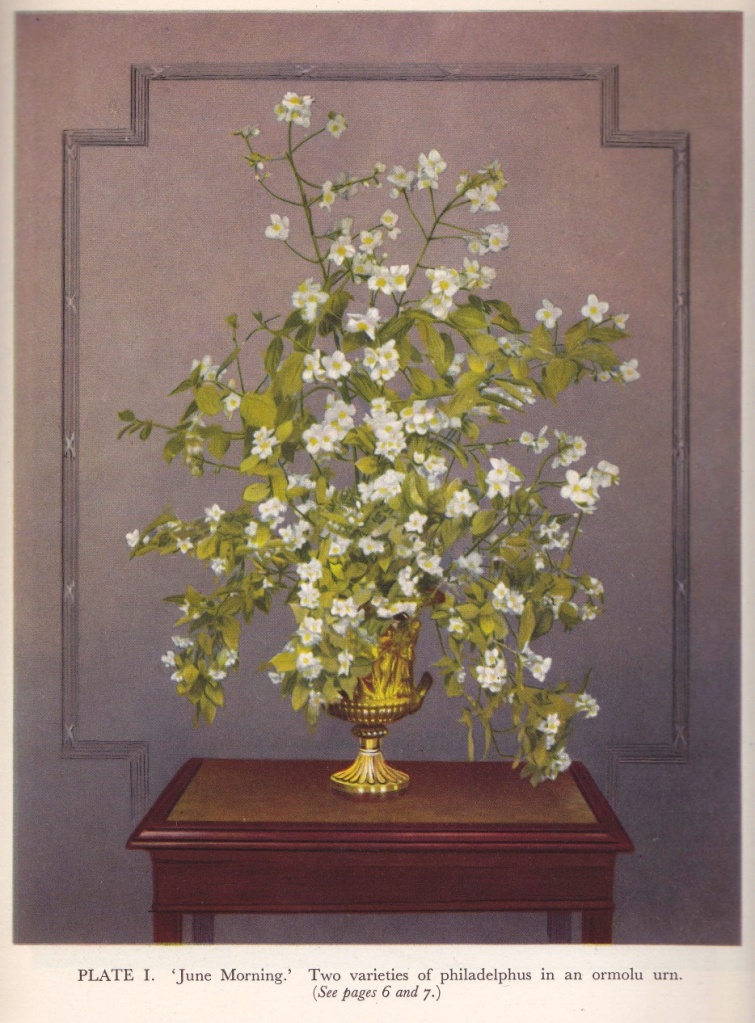 Constance Spry flower arrangements
Constance Spry flower arrangements
I can see this old French wine bottle working too – the narrow neck a perfect light embrace for the soft heads of Hydrangea macrophylla ‘Westfalen’, Thalictrum delavayi and Hydrangea quercifolia:
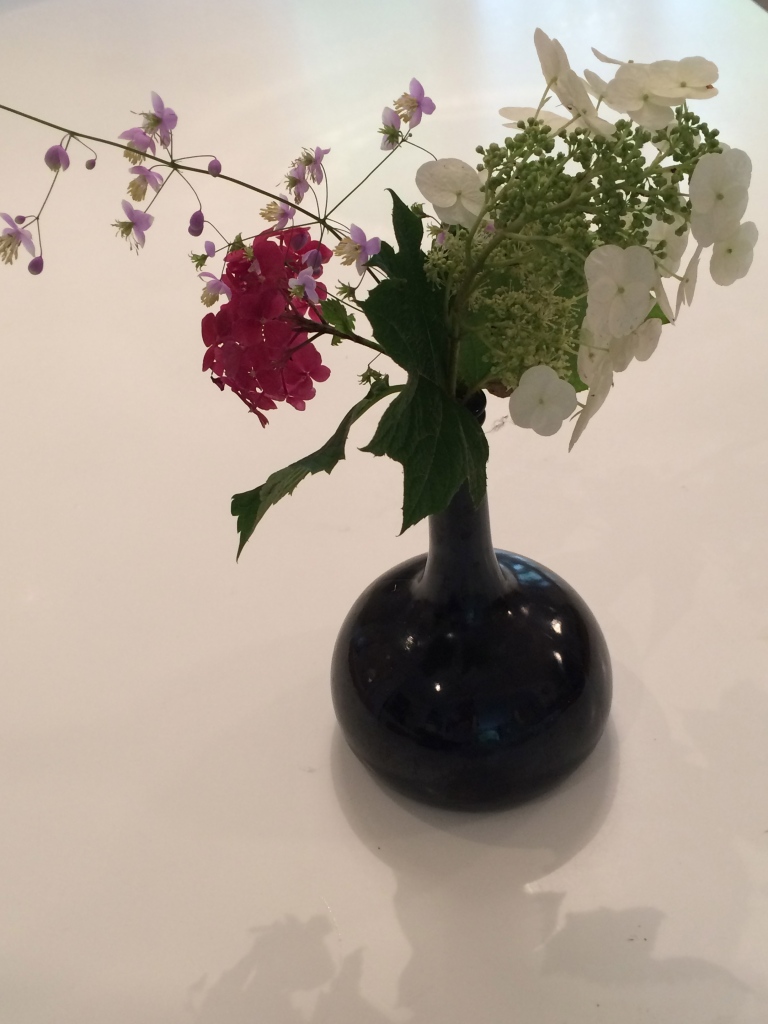
But I think I would prefer to suggest individual plants which Edmund might like to grow in his garden.
My first suggestion would be snowdrops – any snowdrops would be good. In fact I would wager that the simplest white of the single white Galanthus nivalis might be his first choice. Snowdrops are especially apt because of the way they increase and repeat to form a gorgeous rhythmic carpet to echo the way Edmund creates installations out of series of pots “like an idea unfolding.”
A repeating carpet of single white snowdrops
If I had to choose a special snowdrop to be lifted into an earthenware – or indeed porcelain – pot whilst it is in flower and then lowered back into the ground for the rest of the year, it would be Galanthus ‘Wendy’s Gold’, with its clear yellow ovary and glimpses of a yellow interior. This would be to celebrate the way Edmund has used gilding on porcelain very lightly on some of his most beautiful work.
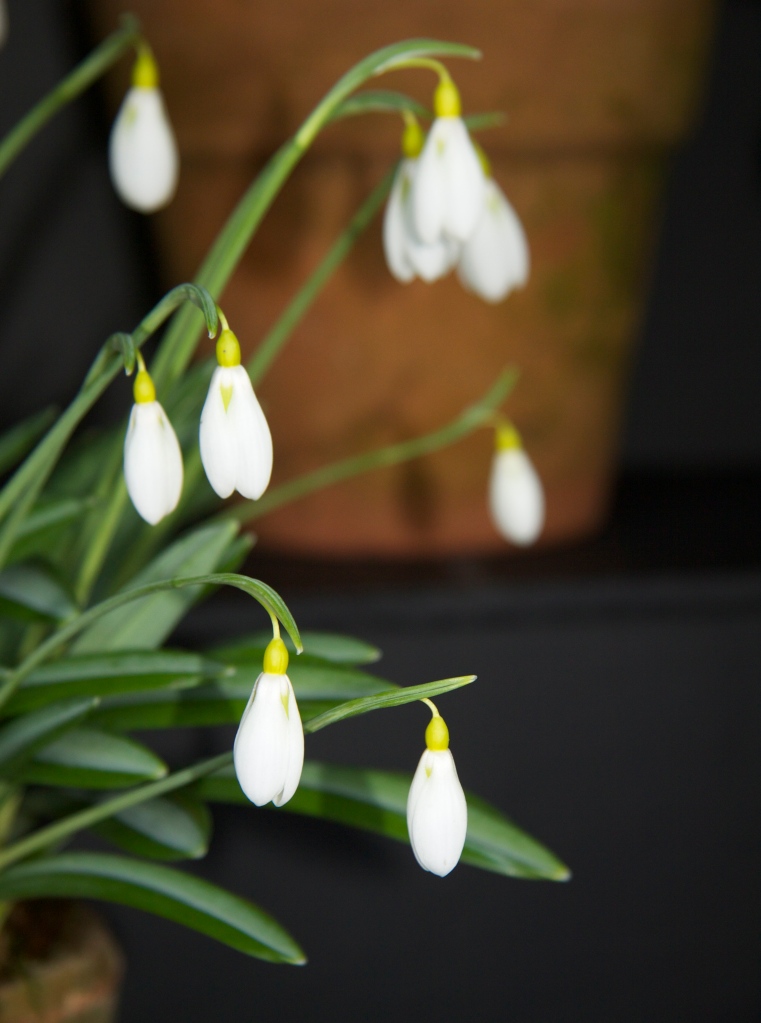
Galanthus ‘Wendy’s Gold’
For later in the Spring, and for their translucent elegance, I would choose the now increasingly rare Narcissus ‘Jenny’, a perfect, demure narcissus with elegant, light-catching, swept back petals and a subtle creamy trumpet. I could not resist the Pheasant’s Eye Narcissus either – Narcissus poeticus var. recurvus. This is a fragrant, later flowering ‘Poet’s Narcissus’ – for Edmund’s evocative storytelling.
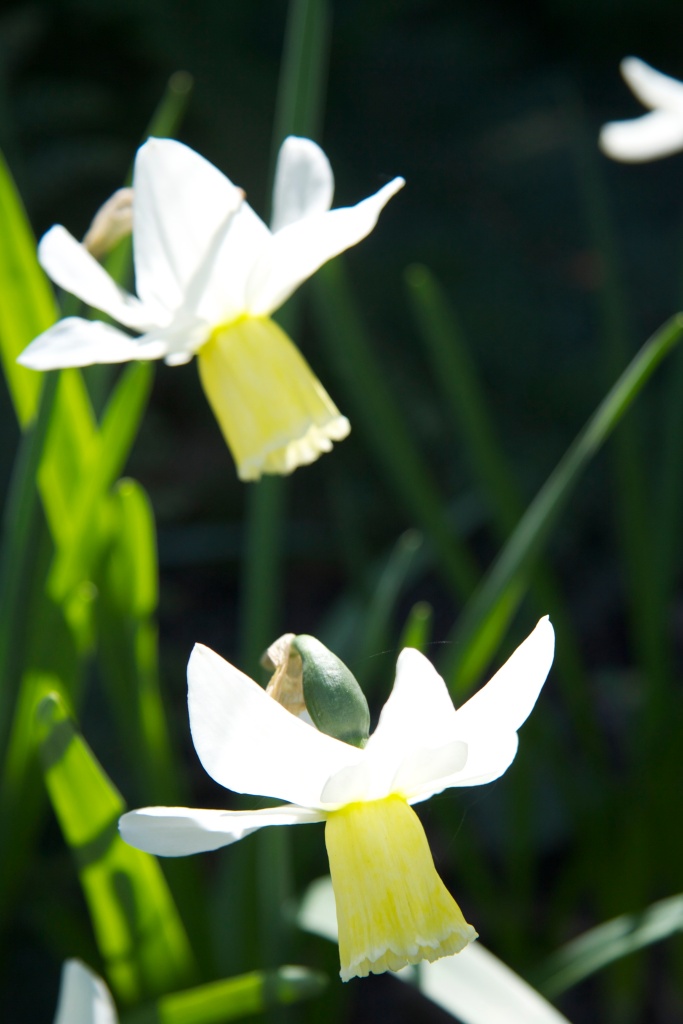
Narcissus ‘Jenny’
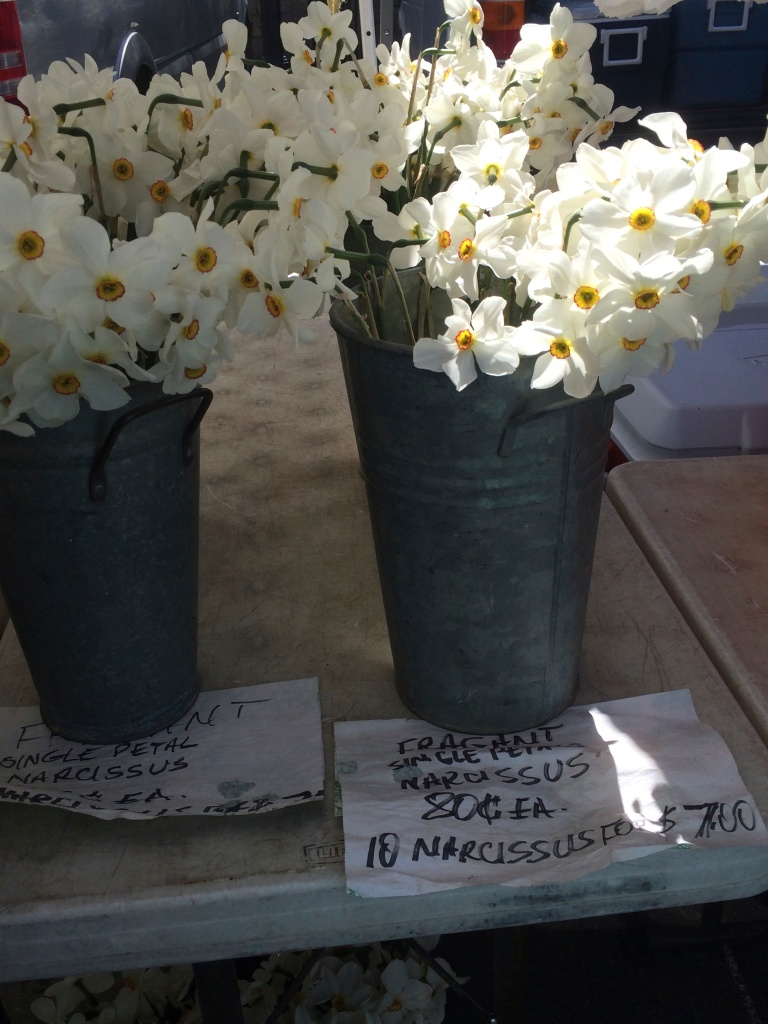
Narcissus poeticus var. recurvus
For spring blossom – to celebrate the influence of China and especially Japan on Edmund’s work – I could choose any number of cherry, almond or plum trees. I think the white ornamental quince Chaenomeles speciosa ‘Nivalis’ would be a good choice as the flowers have a certain spare clarity to them.
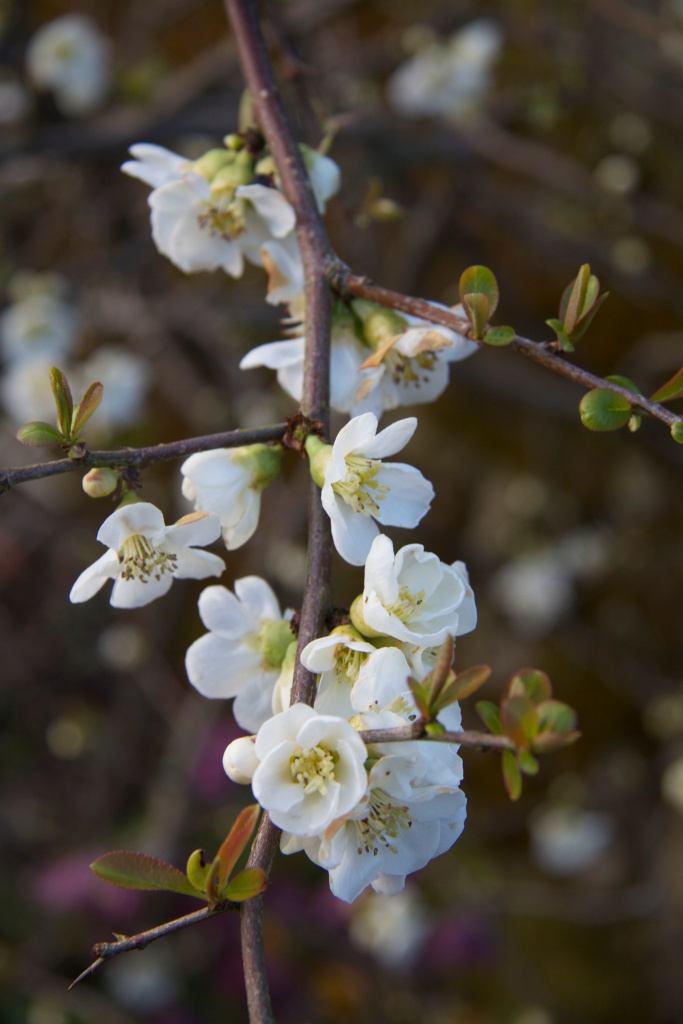
Chaenomeles speciosa ‘Alba’
For June there would be the flowering dogwood Cornus kousa ‘Madame Butterfly’ – which has pink blushed white bracts to echo the slight blush or bloom on a glaze or piece of porcelain, carefully examined. ‘Madame Butterfly’ is known also for fantastic autumn colour and generous crops of pendant bright red fruit – so definitely a plant to shake things up a bit if this collection looks for a moment as if it is trying too hard.
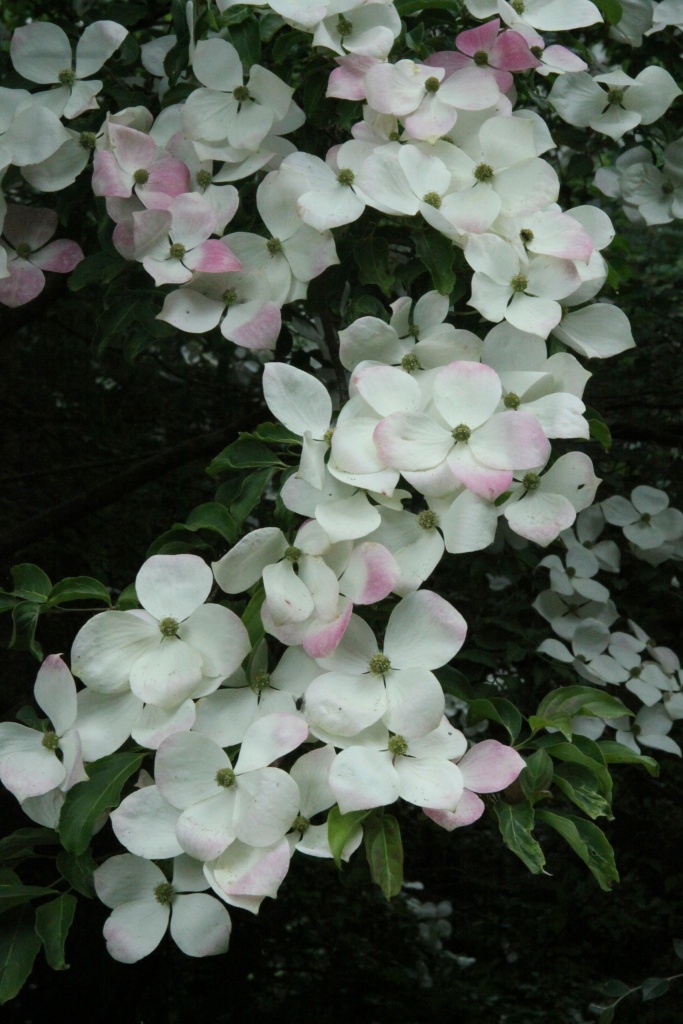
Cornus kousa ‘Madame Butterfly
I think quince would be a perfect fruit tree for Edmund – a simple, oriental quality to the blossom in spring, large oval leaves which are fantastically translucent in the sun and fragrant, slightly downy fruit which can sit quietly in a bowl on his writing desk and be held when a little light distraction is required.
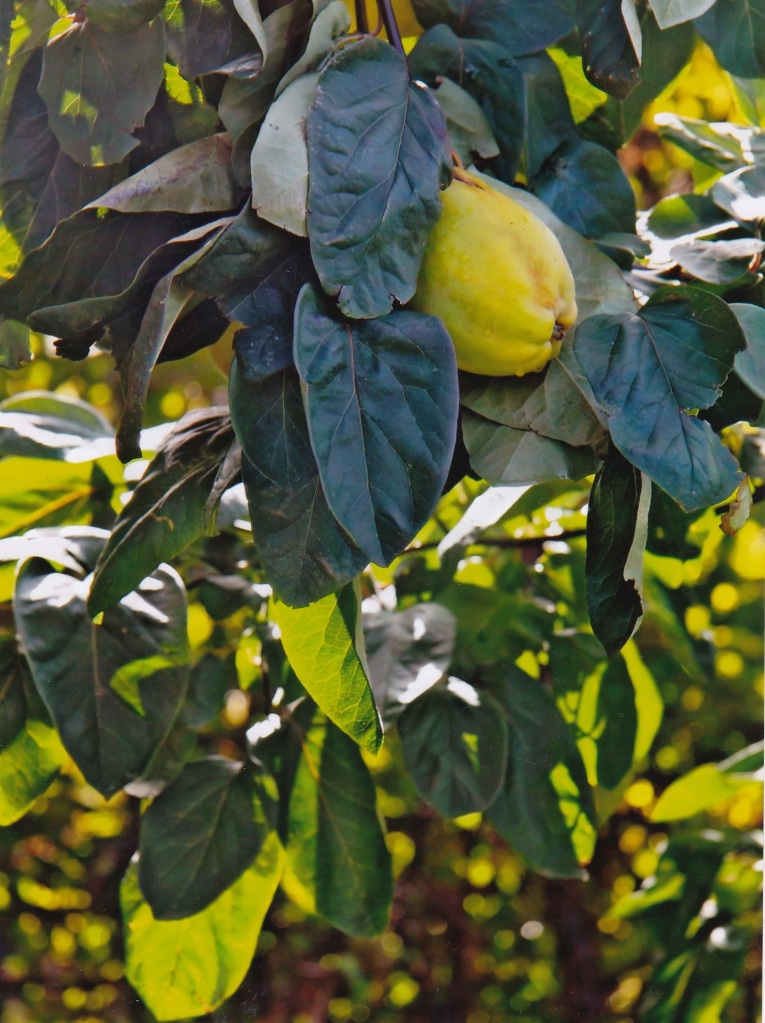
Quince in late summer sunshine
My final tree choice would be Sorbus cashmiriana – for its porcelain like clusters of fruit and gilt tipped foliage against a brilliant September sky.
But I haven’t finished yet with The White Garden at Sissinghurst. Against one wall is my favourite white rose for a sheltered garden wall, Rosa laevigata ‘Cooperi’. A neat climbing rose with particularly fine, glossy foliage and glistening white flowers, held singly, each with a large boss of yellow stamens:
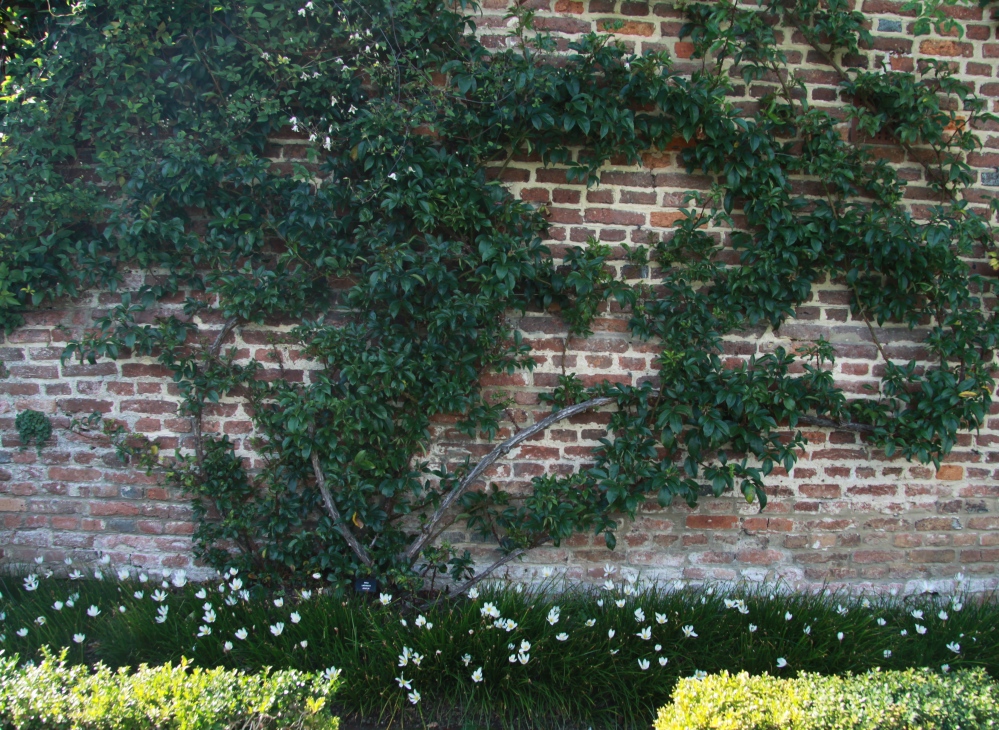
Rosa laevigata ‘Cooperi’ against the wall of the The White Garden, Sissinghurst
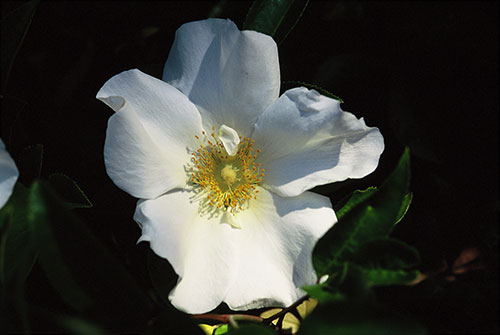
Rosa laevigata ‘Cooperi’ flower in June
Here in The White Garden the rose is underplanted with a completely magnificent swathe of autumn flowering bulb Zepharanthes candida:
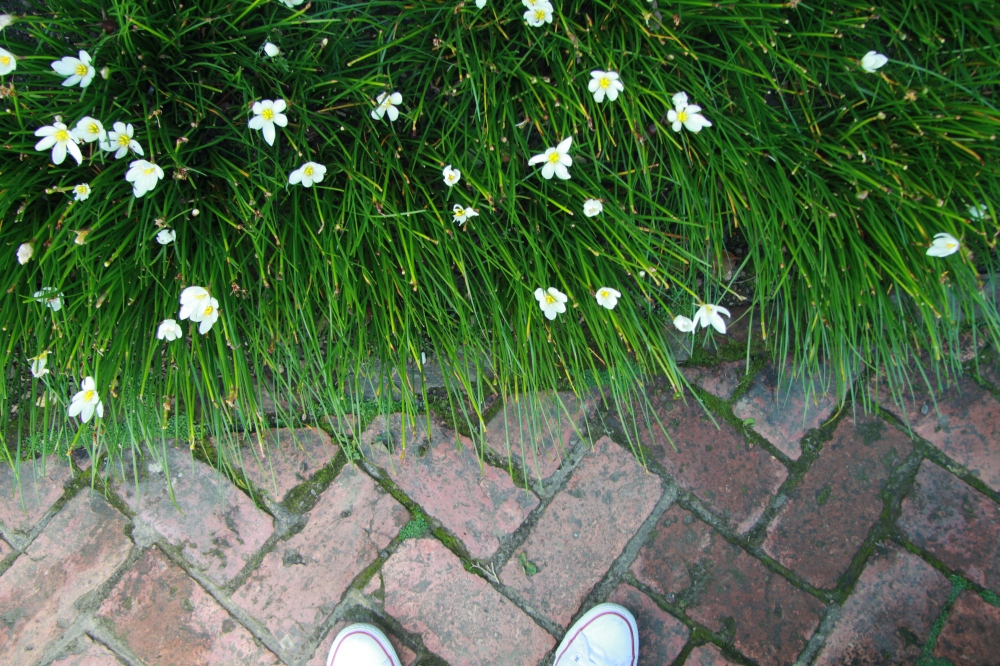
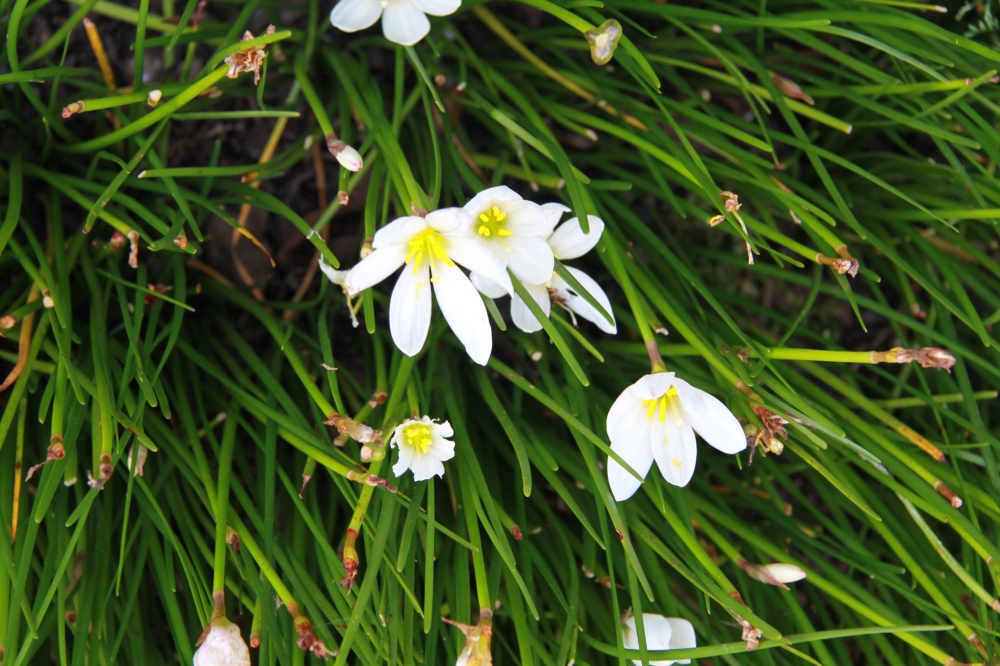
Zepharanthes candida
Clambering lightly over the rose is the loveliest clematis – with pink-tinged, white, bell-like flowers on slender stems – this is the Estonian herbaceous Clematis ‘Kaui’ which will flower from June to September:
A strange coincidence occurs as I am about to recommend this group of plants to my friend. I discover that the other name for the species, Rosa laevigata (as opposed to the more highly bred selection ‘Cooperi’) is the ‘Cherokee Rose’. It was introduced from China to the USA in the 1780’s and has been long associated with the ‘Trail of Tears’ – the forced relocation of Native Americans. One of the most poignant moments of the journey related in ‘The White Road’ was a trip to the Appalachian Mountains to track down the ‘white clay’ so valuable to Europeans such as Josiah Wedgewood and often so roughly prized from the Cherokees.
Such are the dangers of any kind of investigation I suppose. I am a little thrown by my discovery, but still think this group of three white flowering plants are a strong combination. They would be a restrained, elegant addition to a sunny studio wall.


